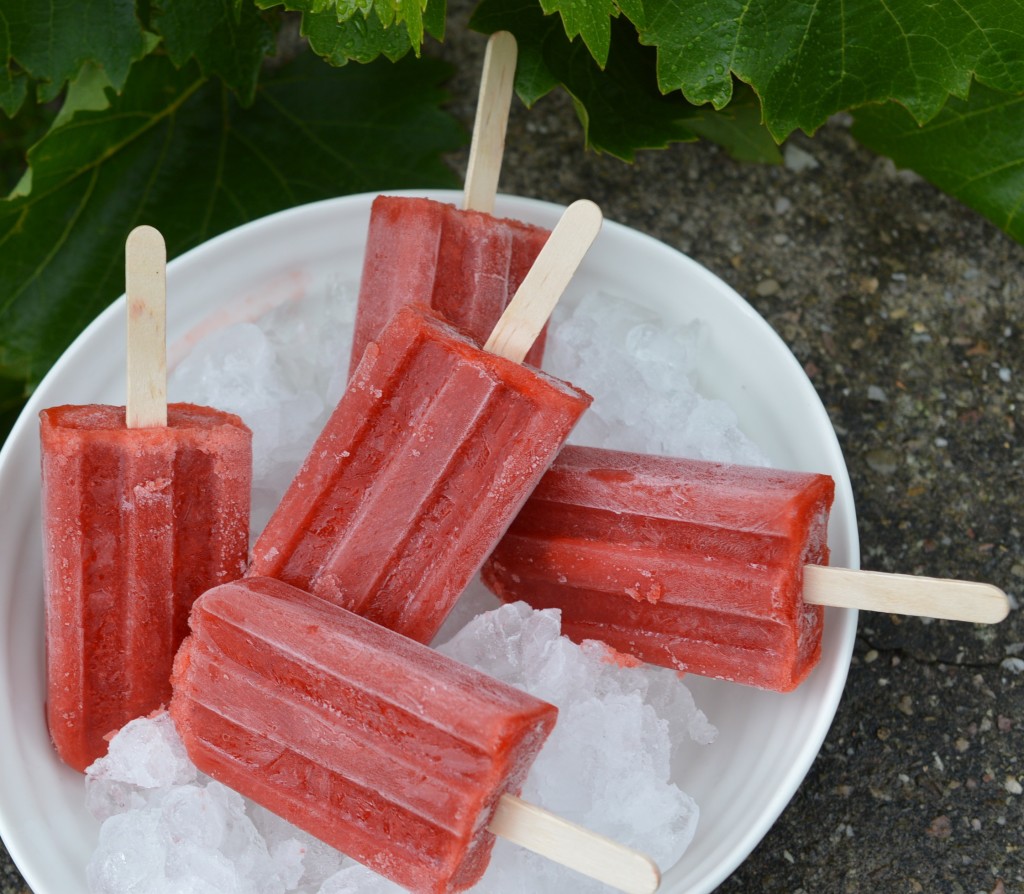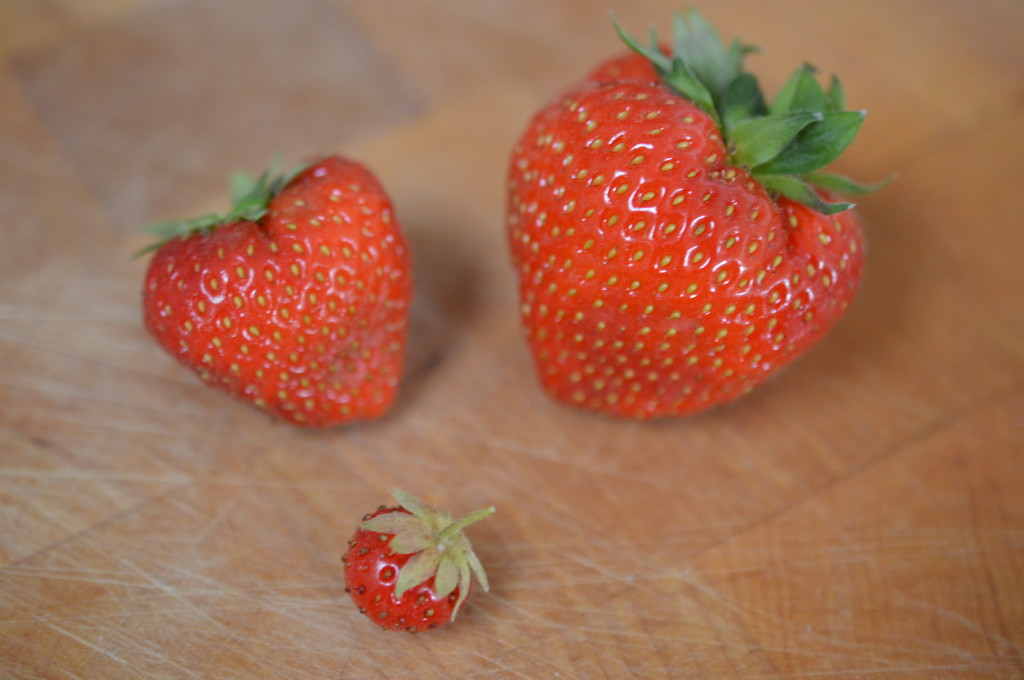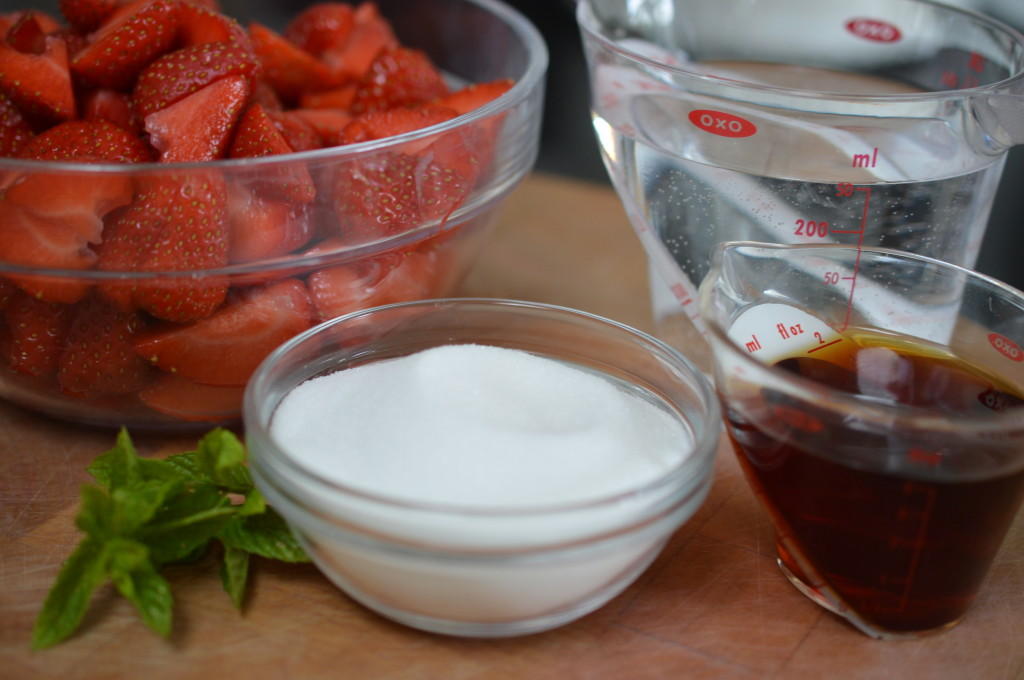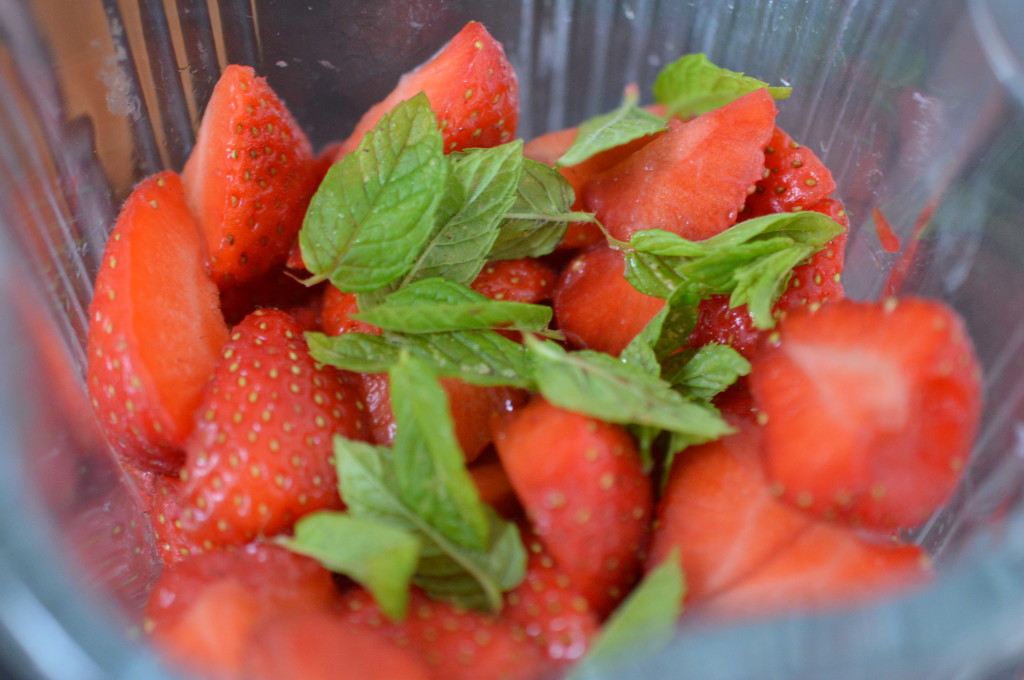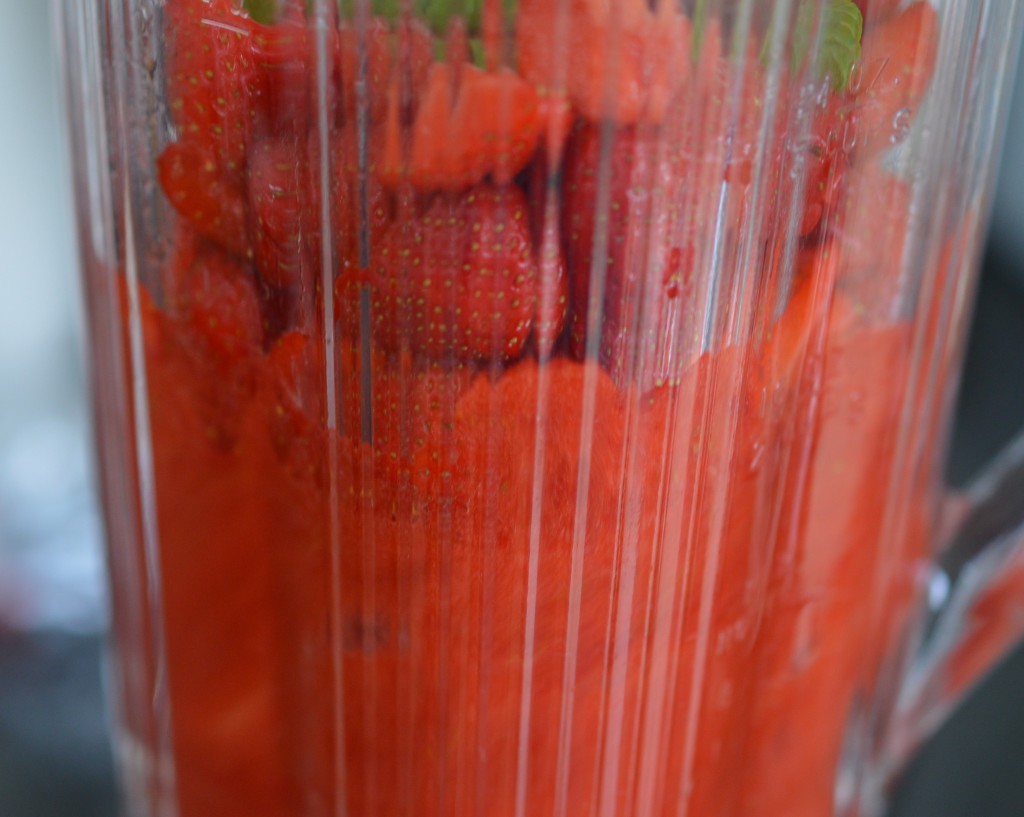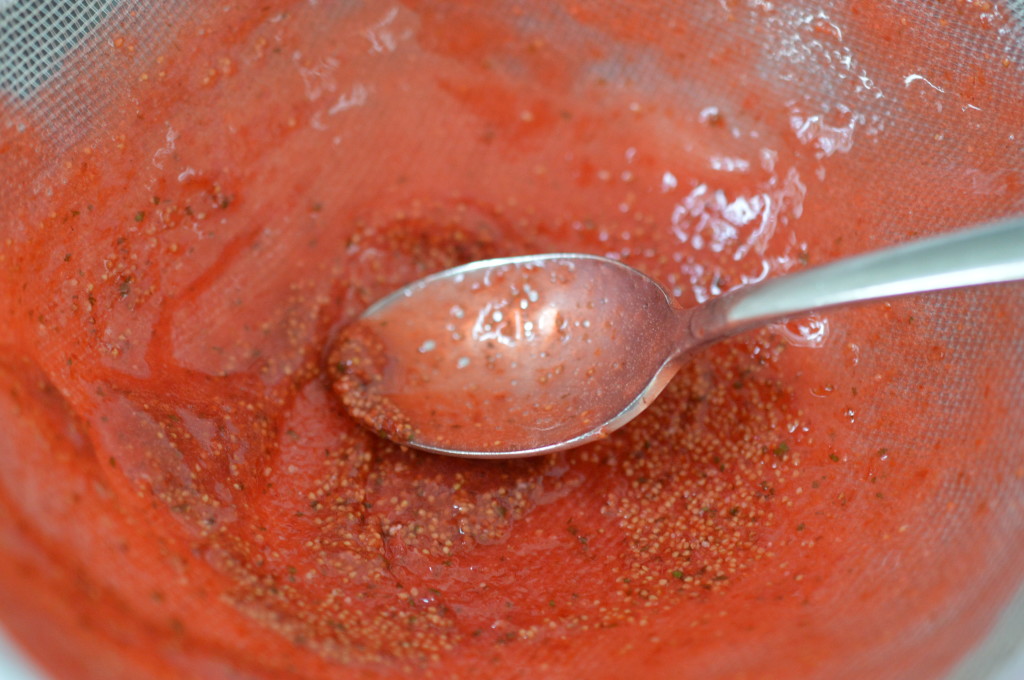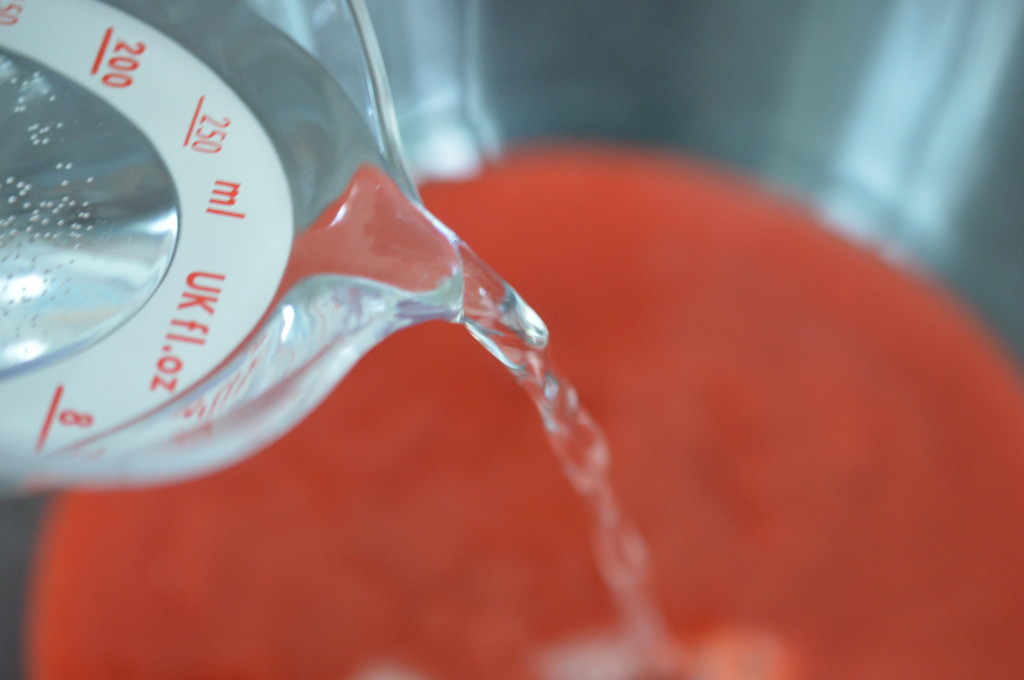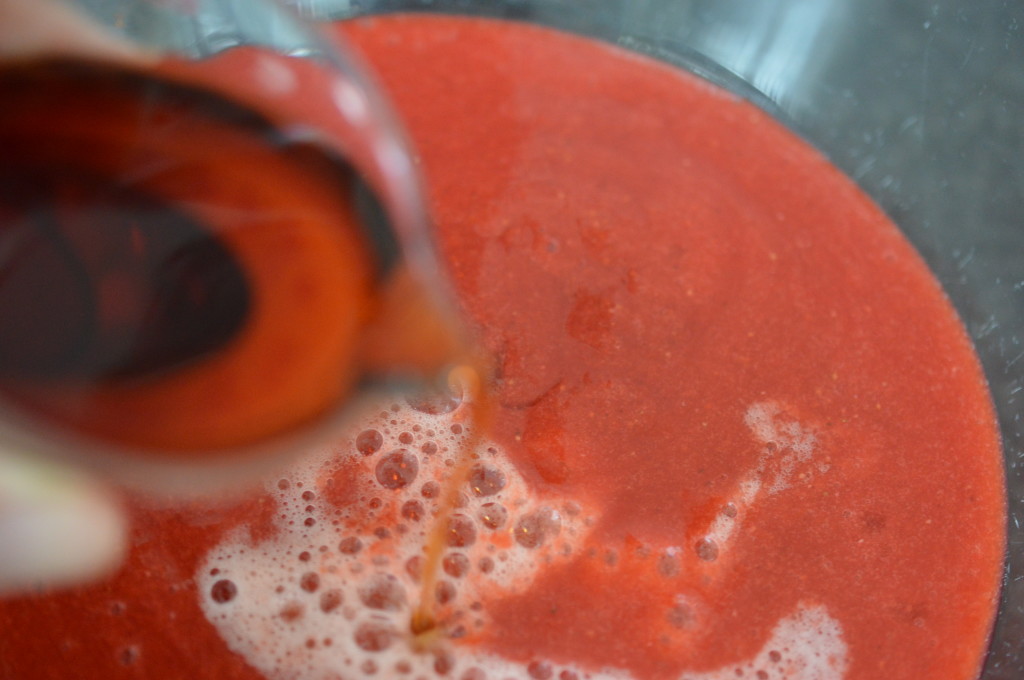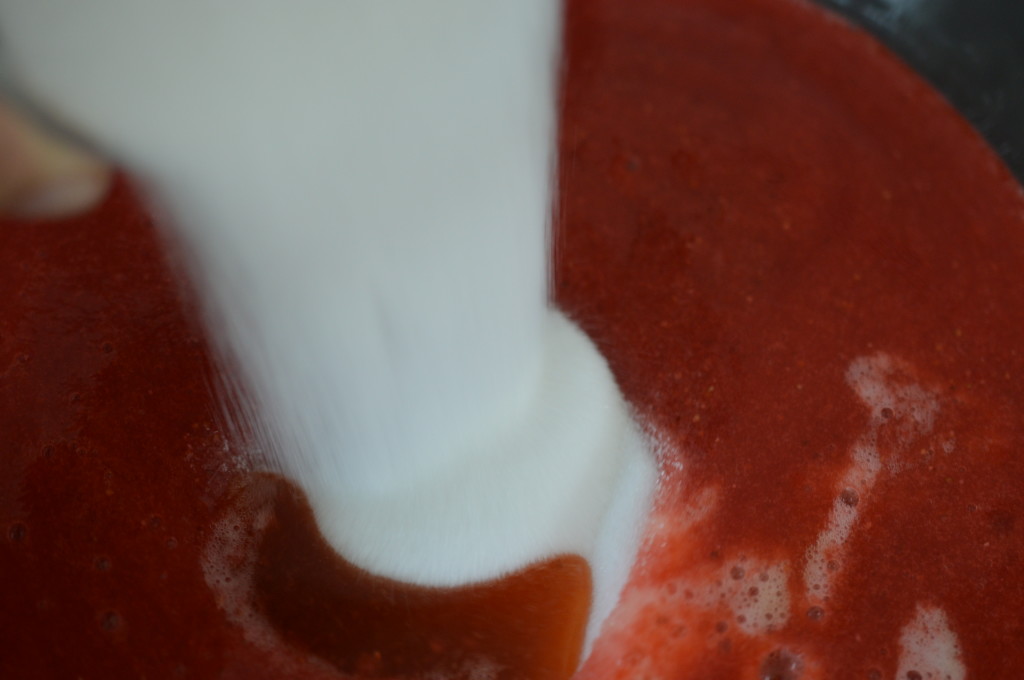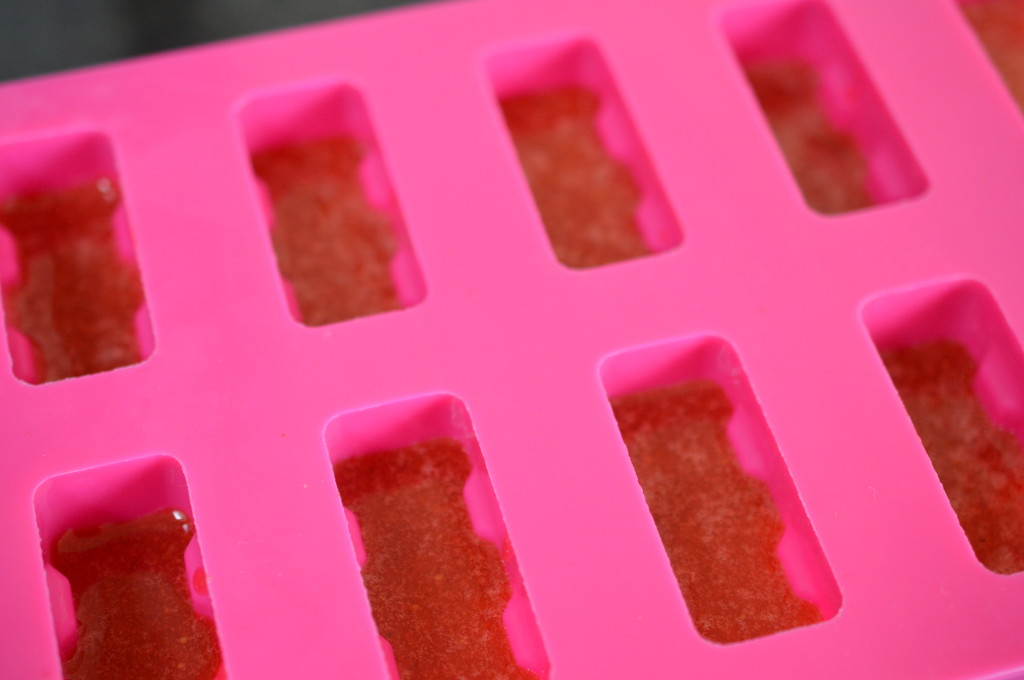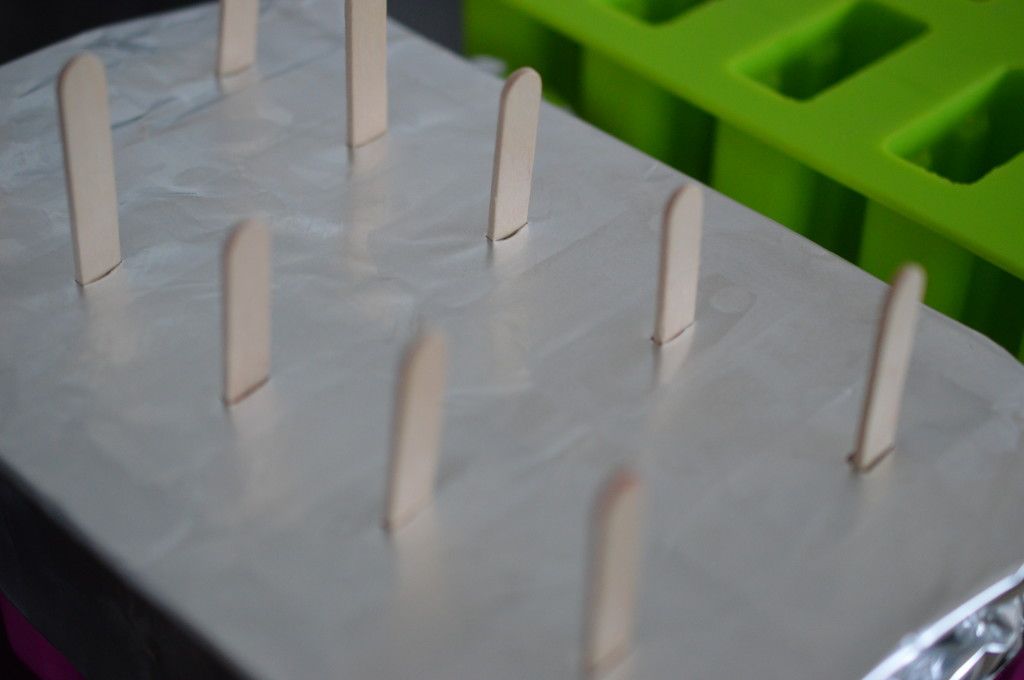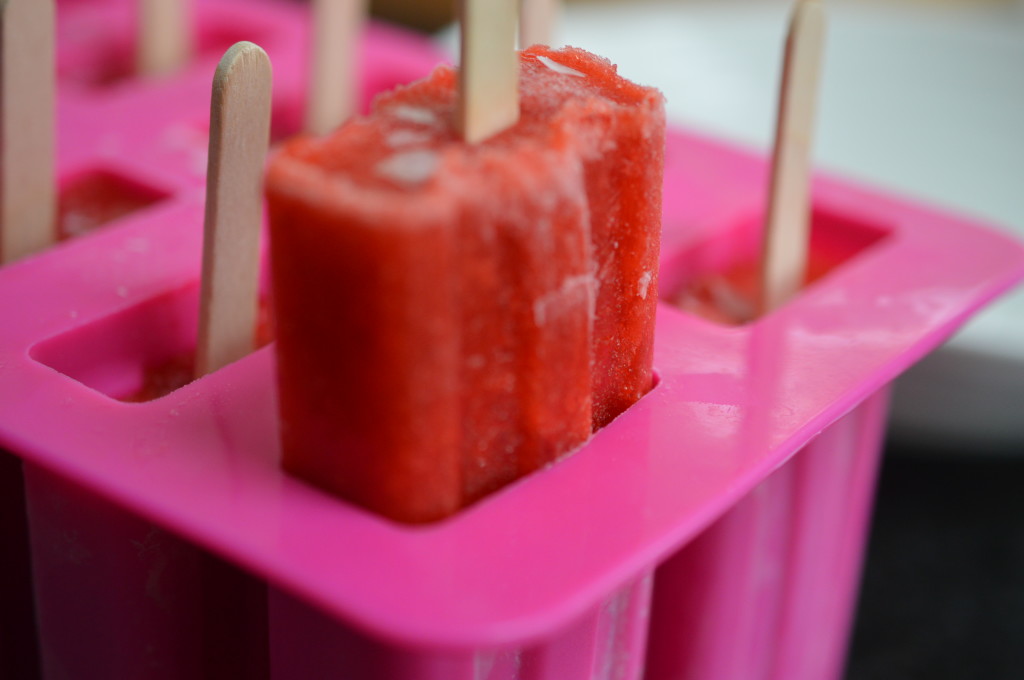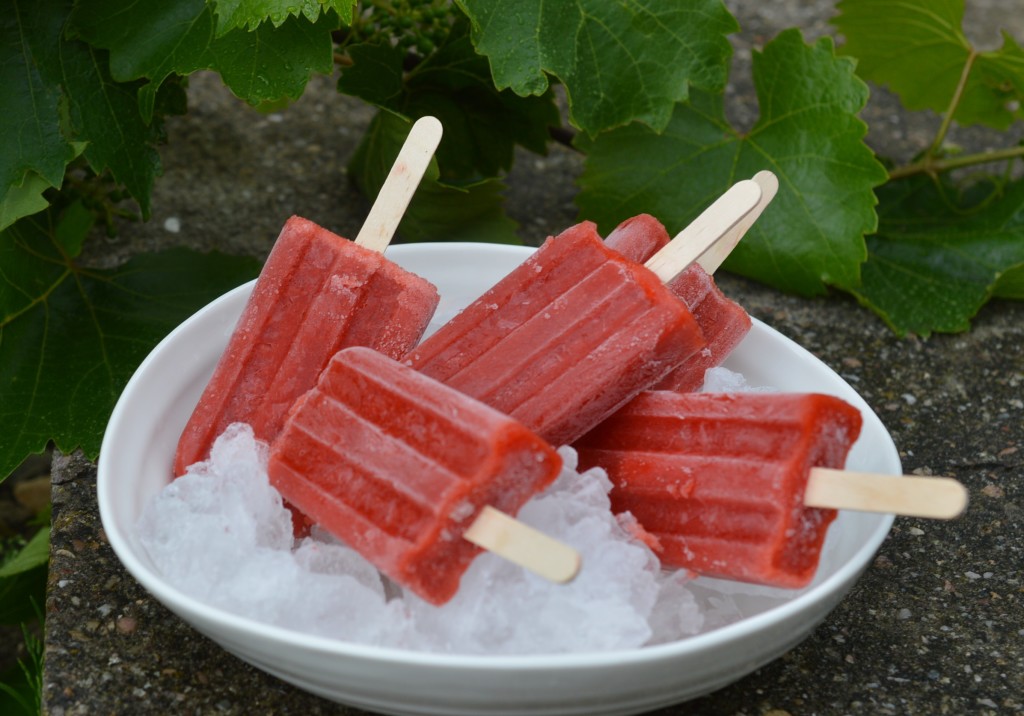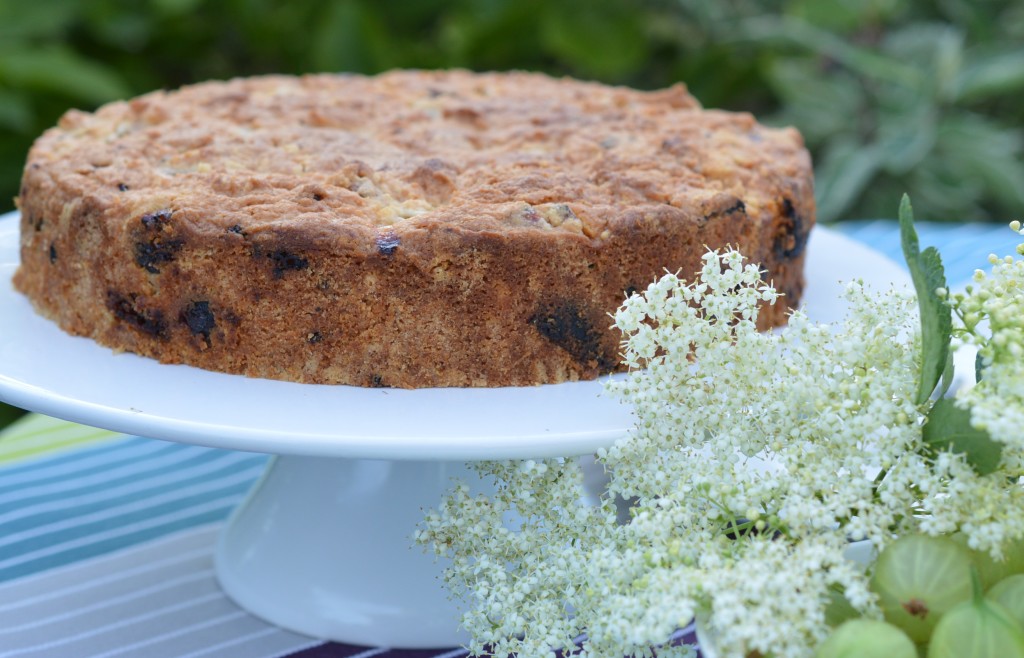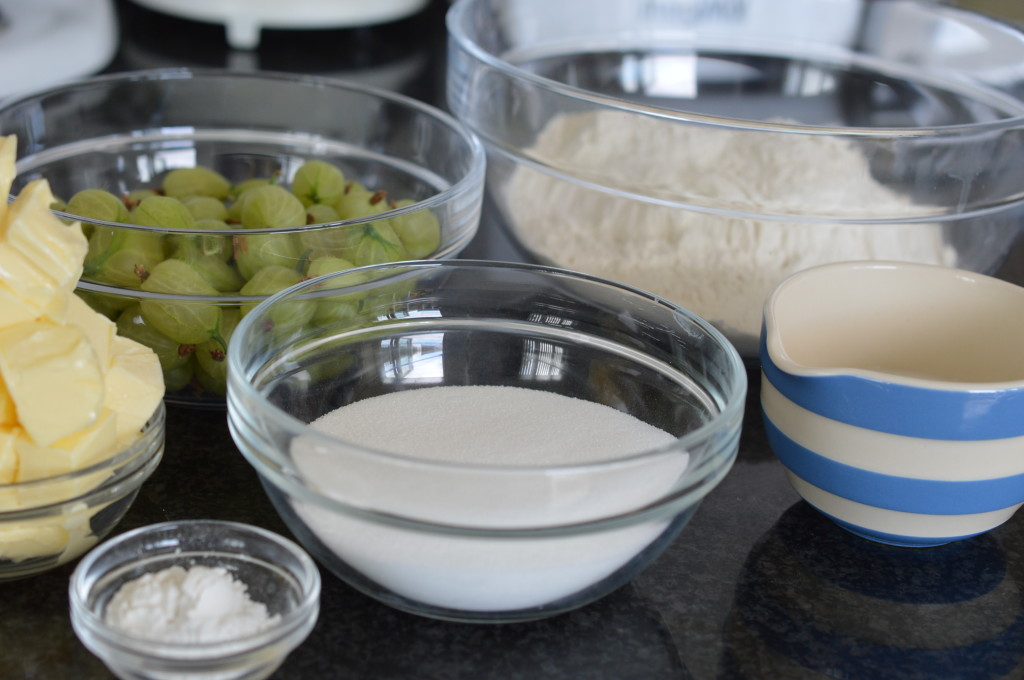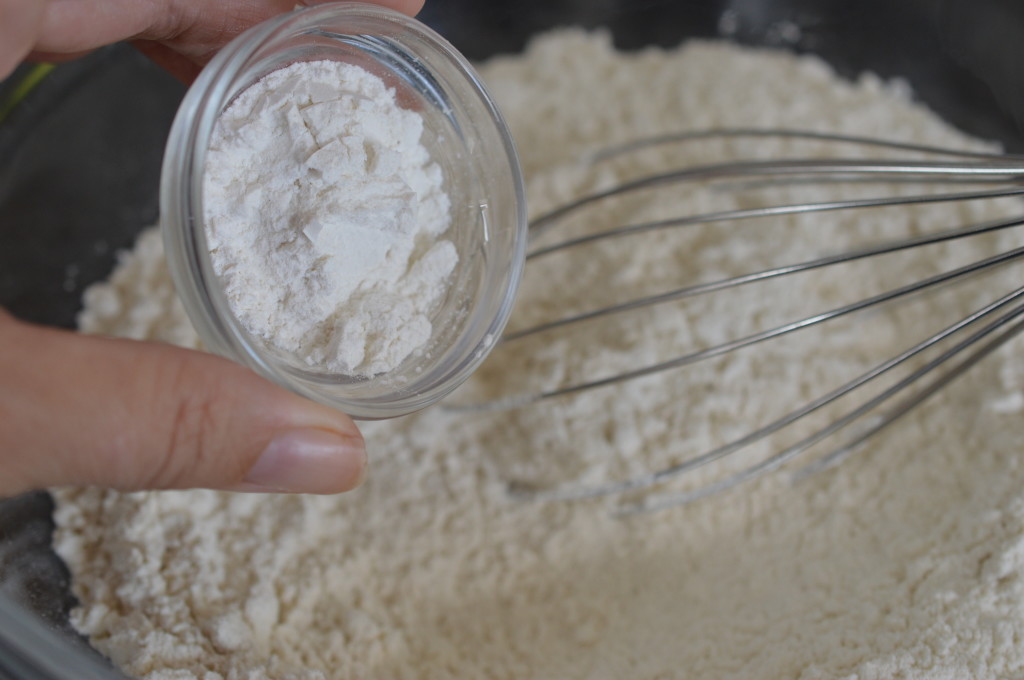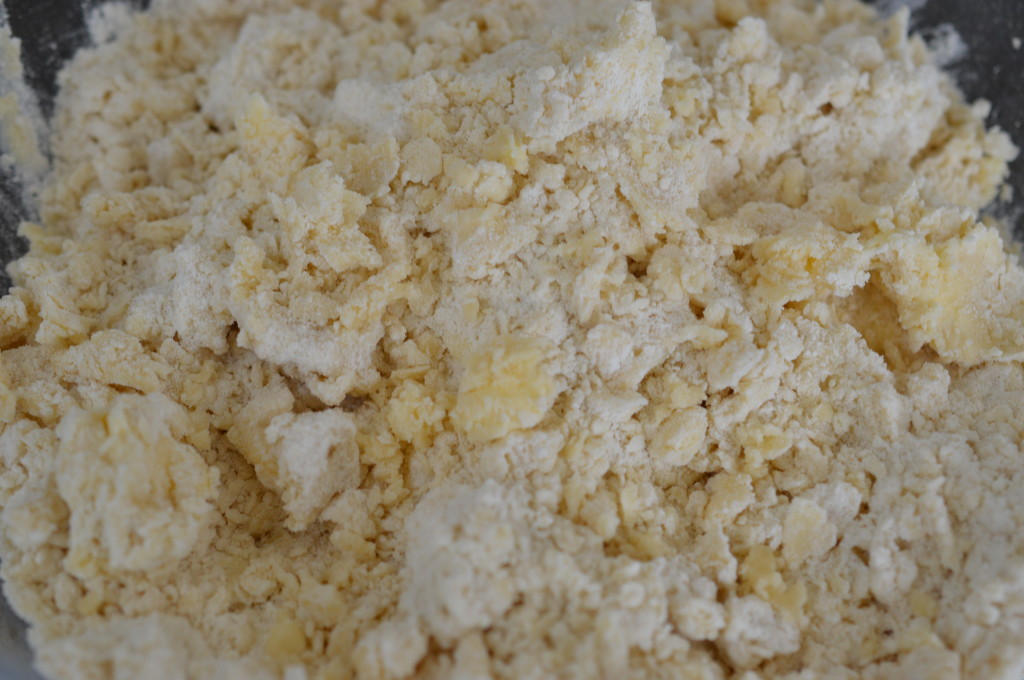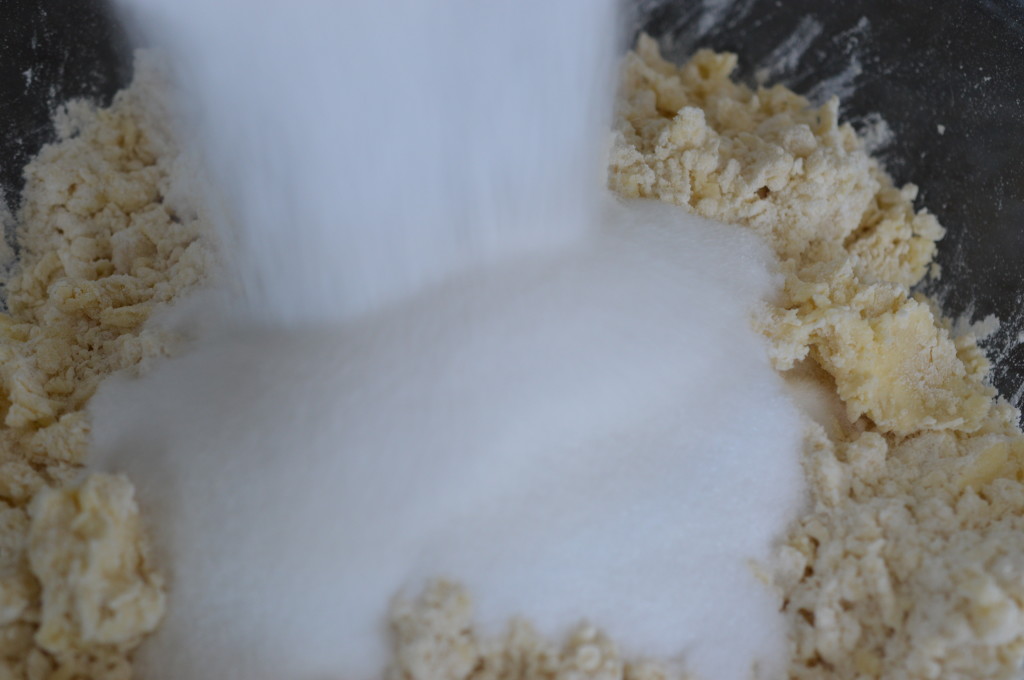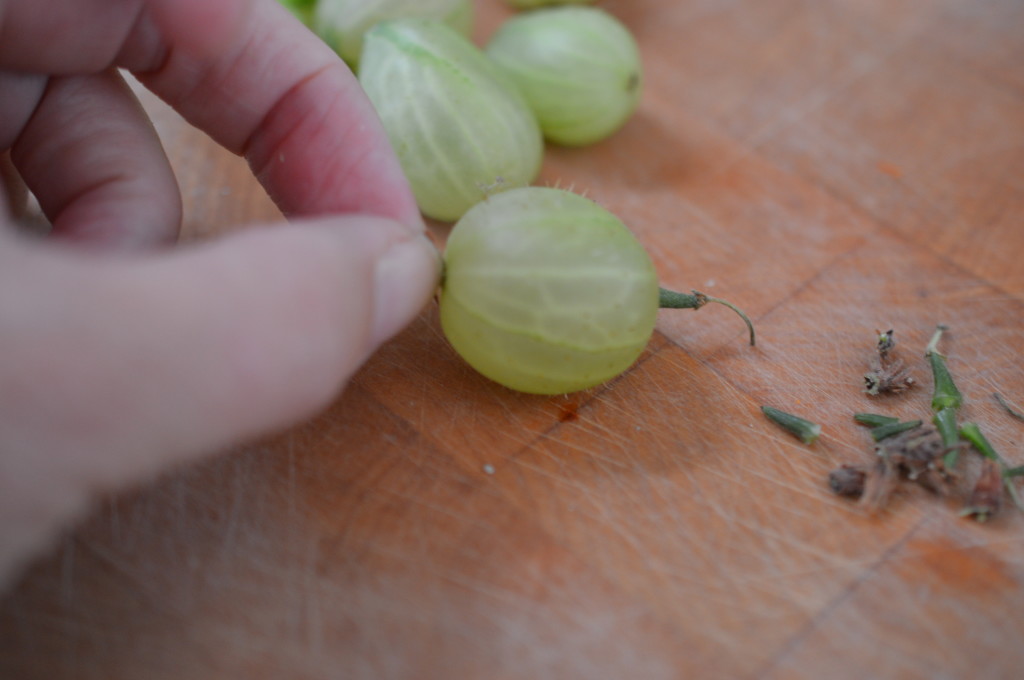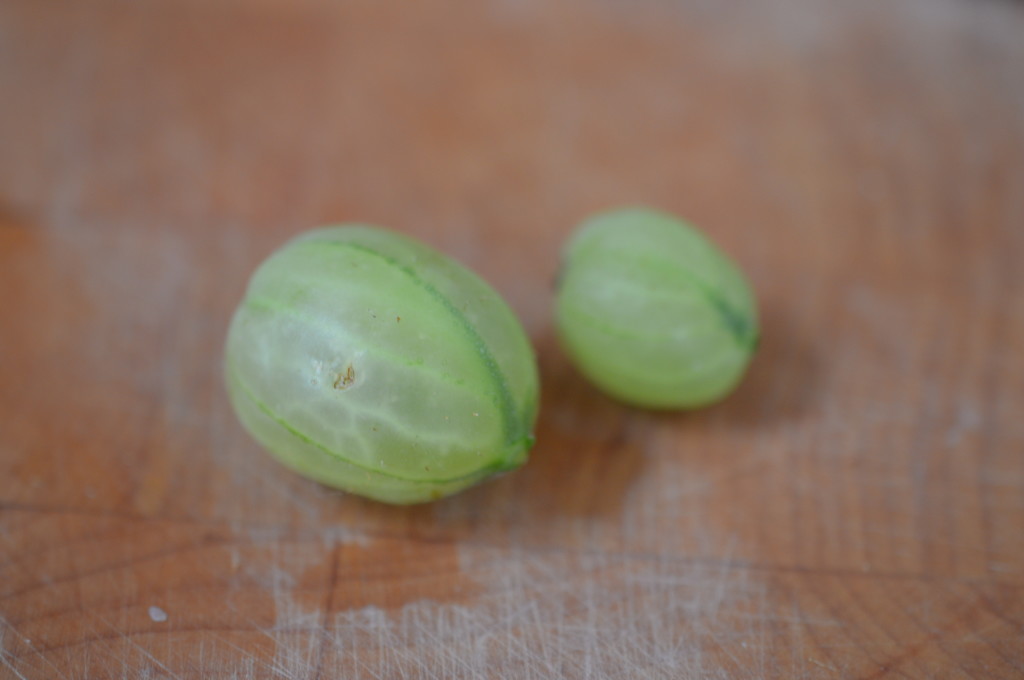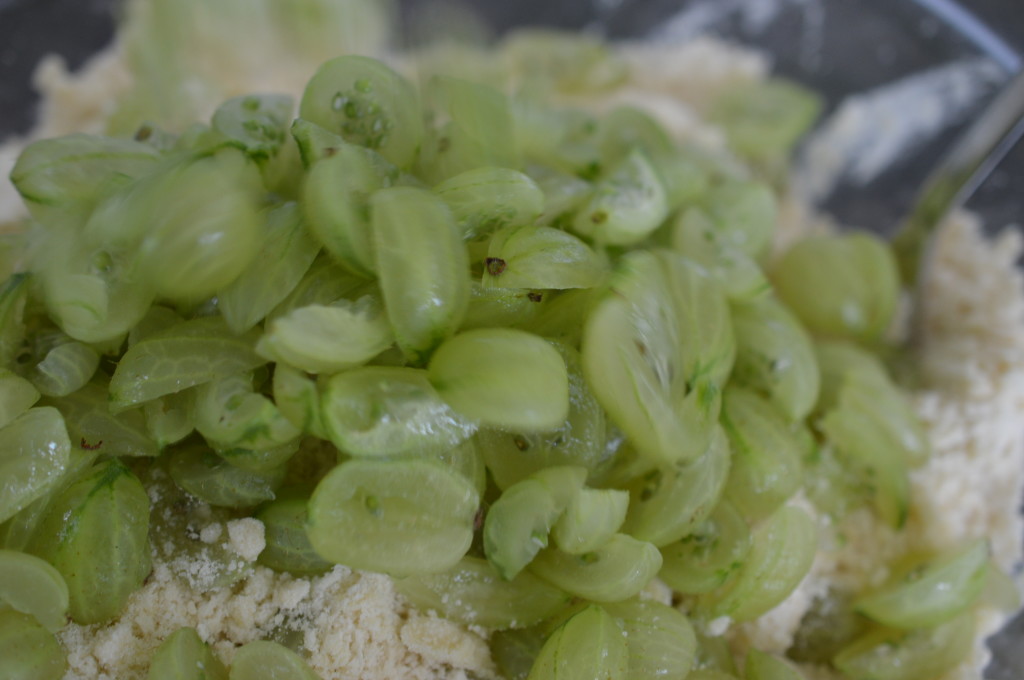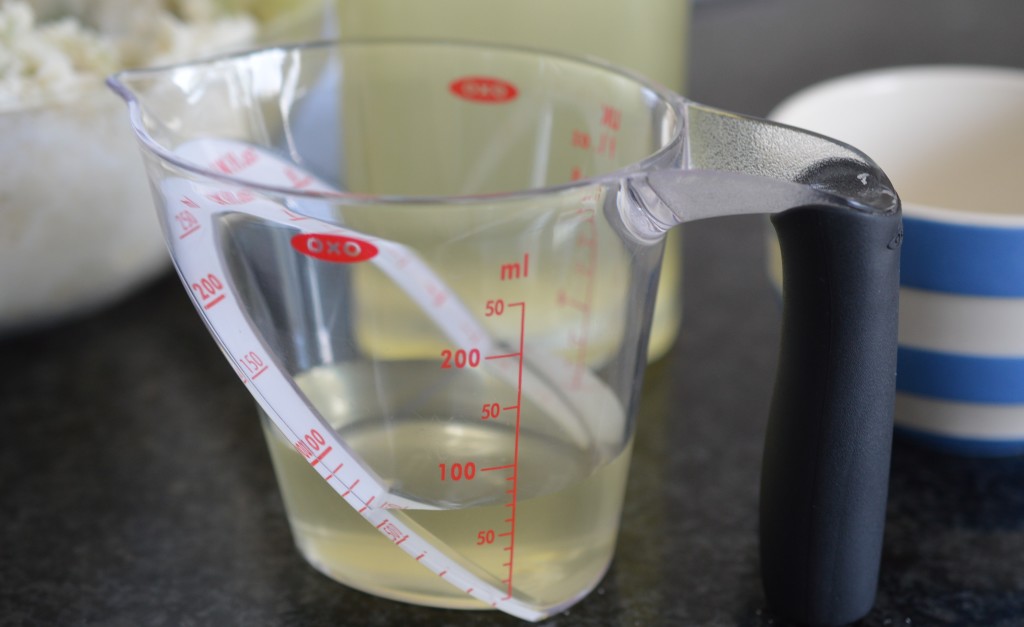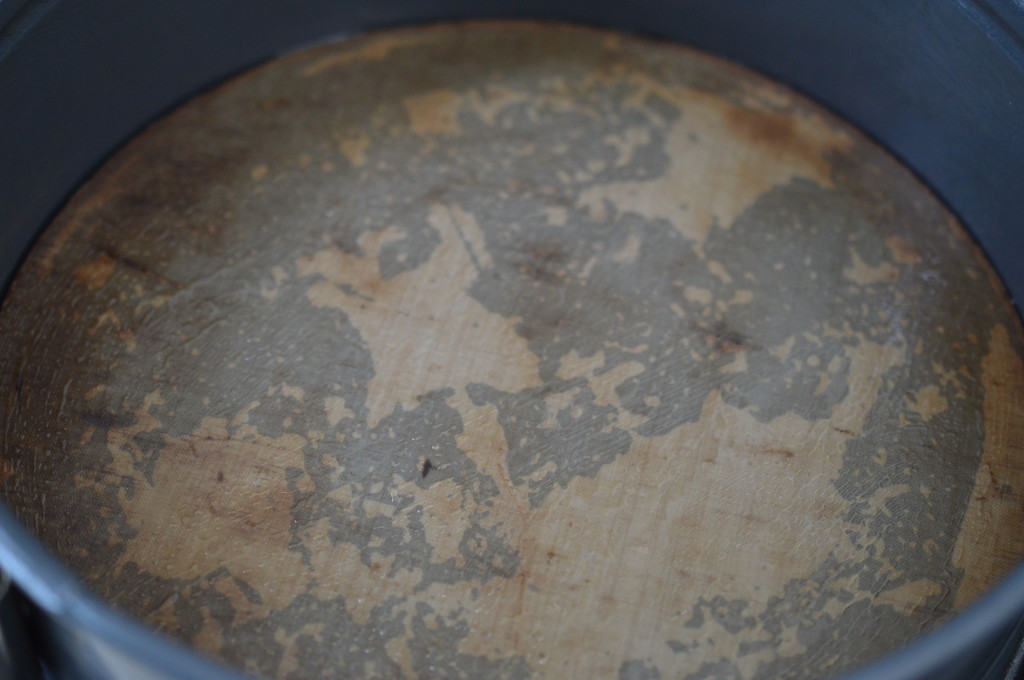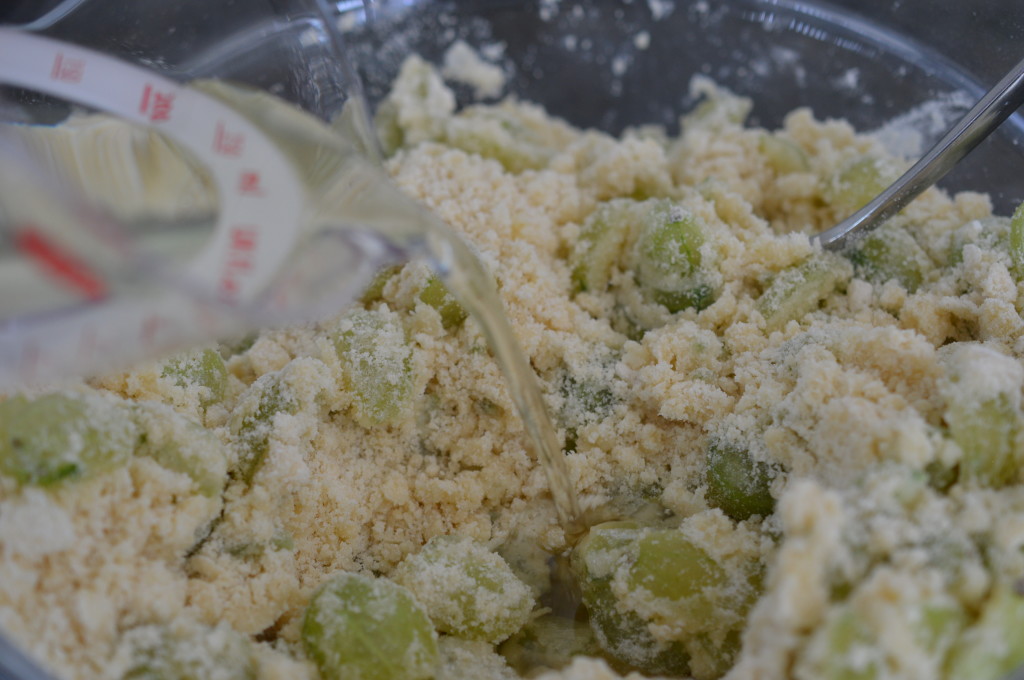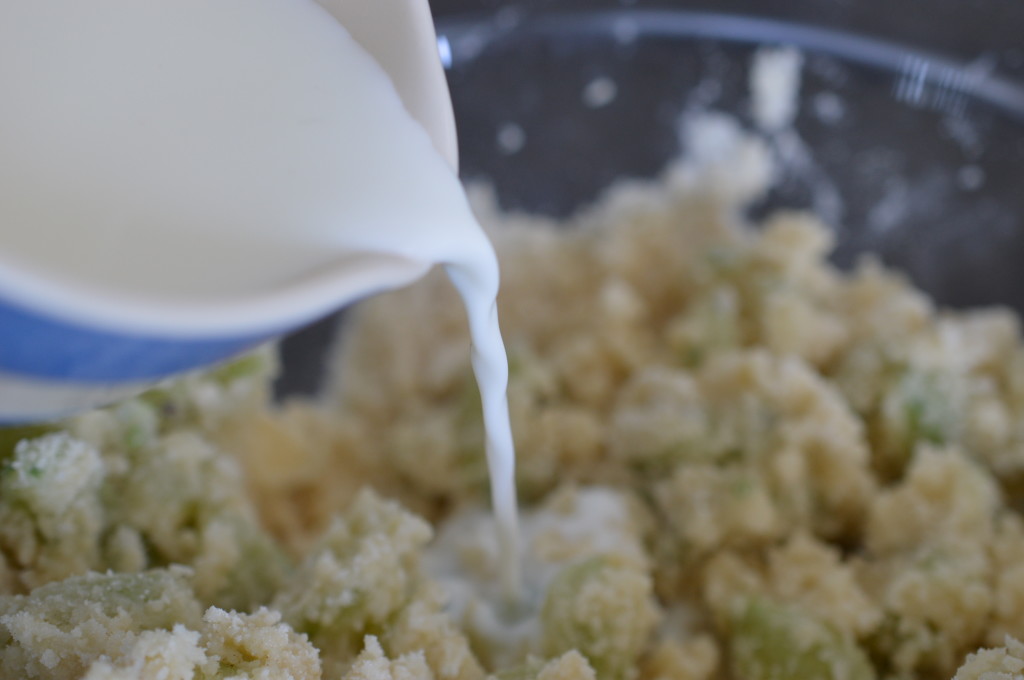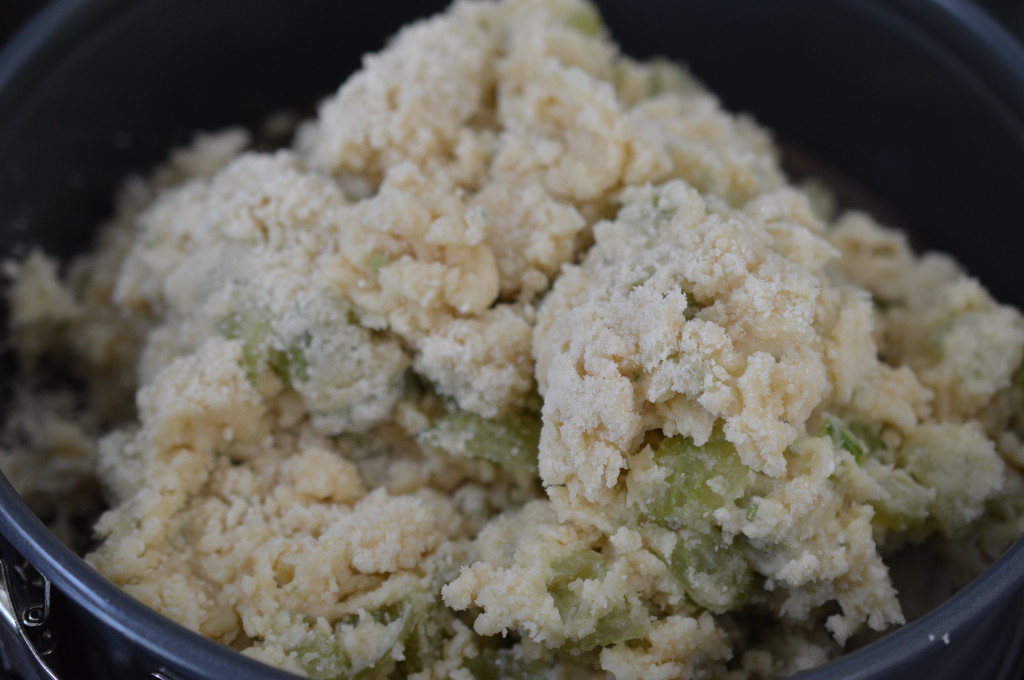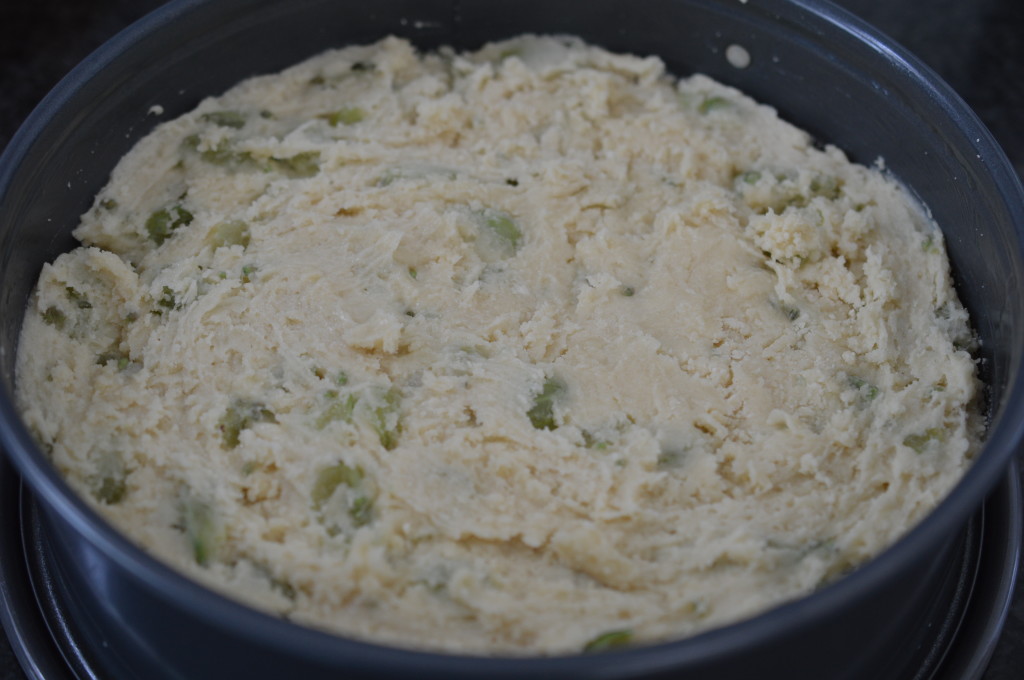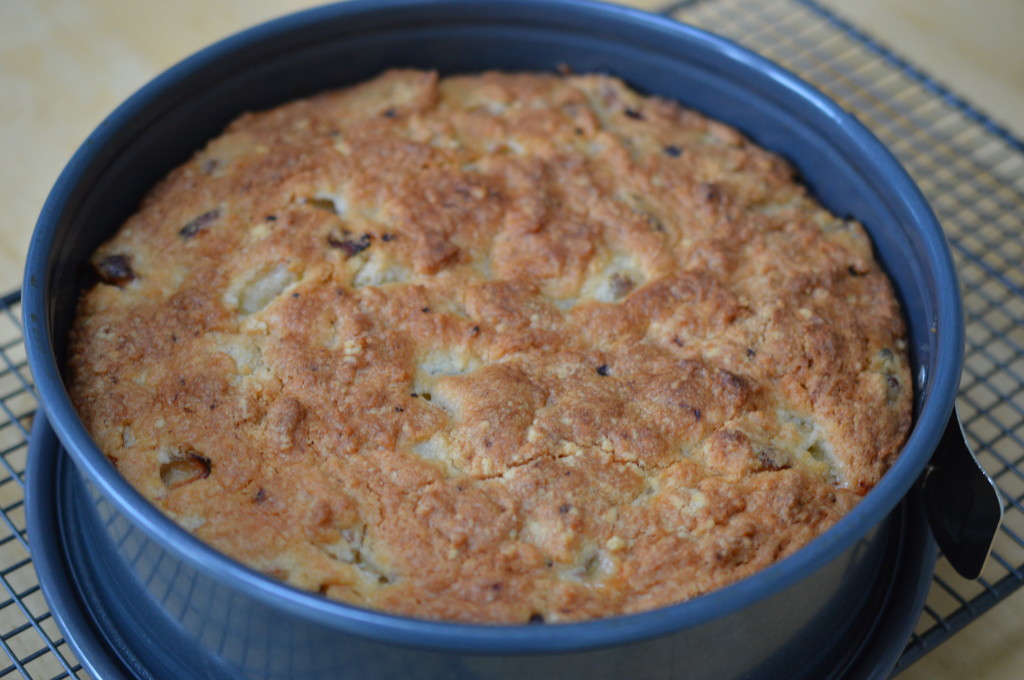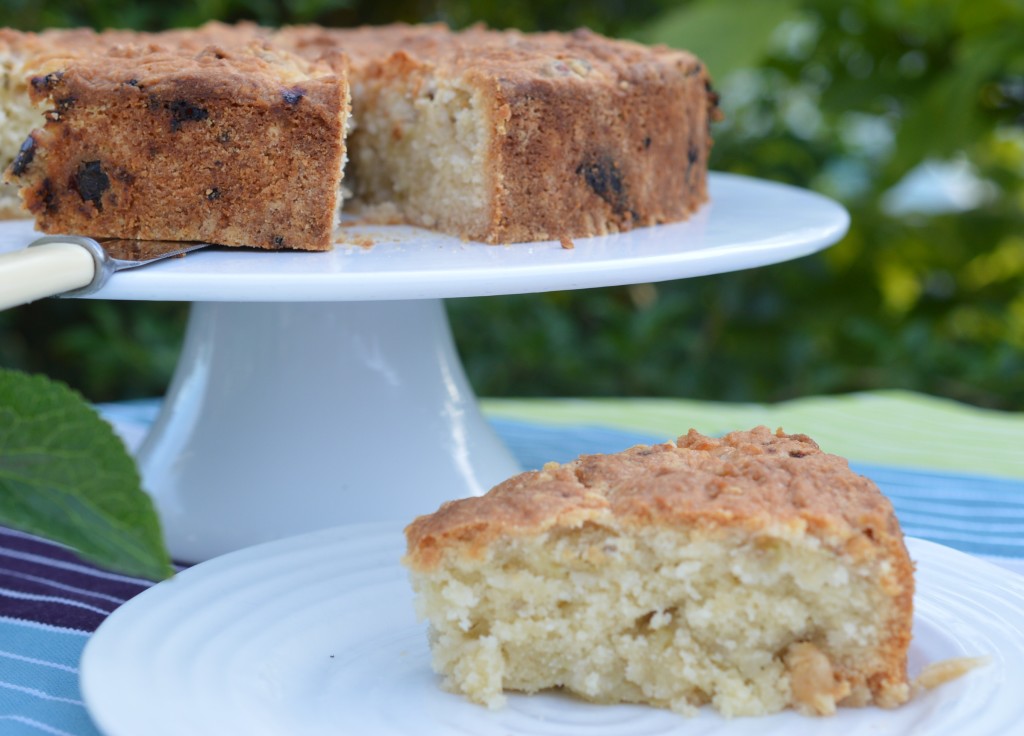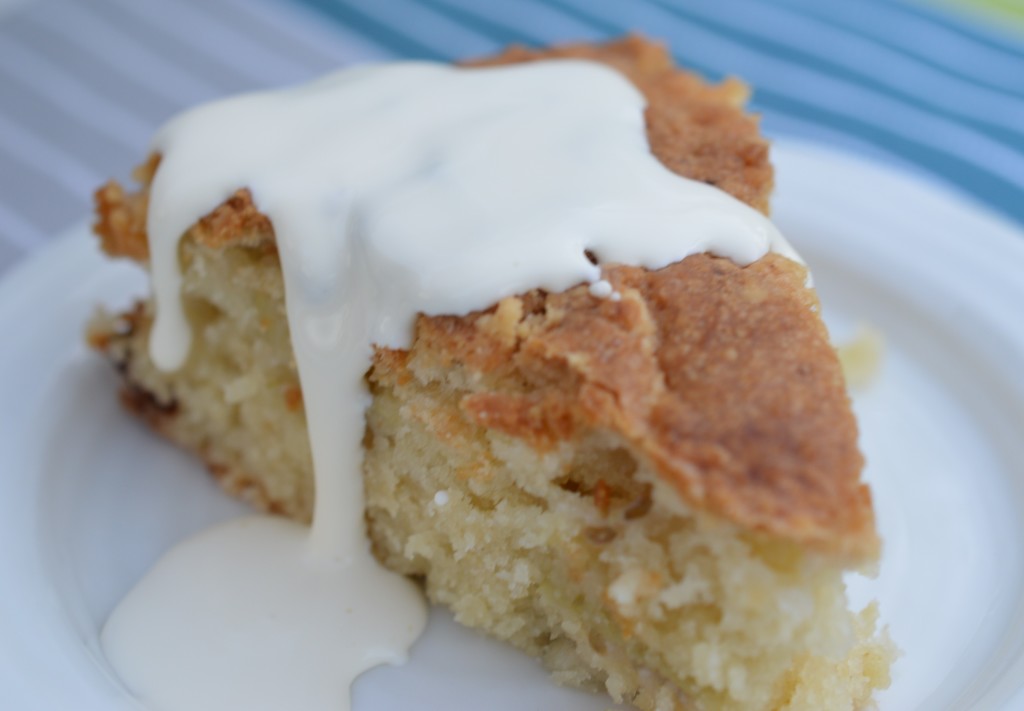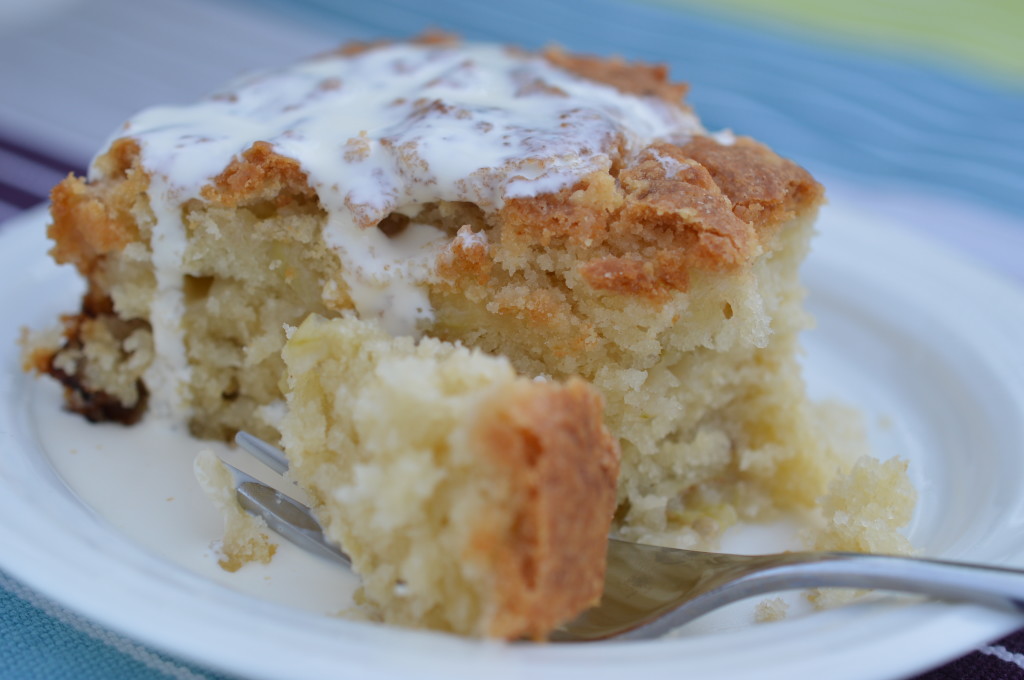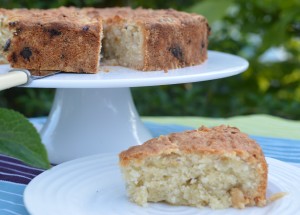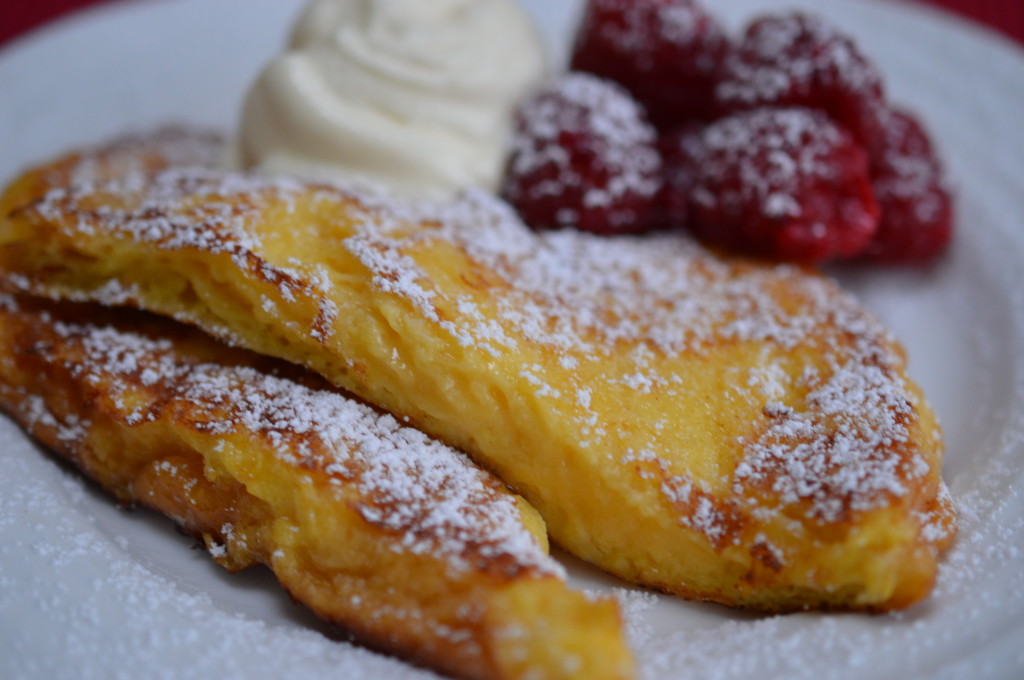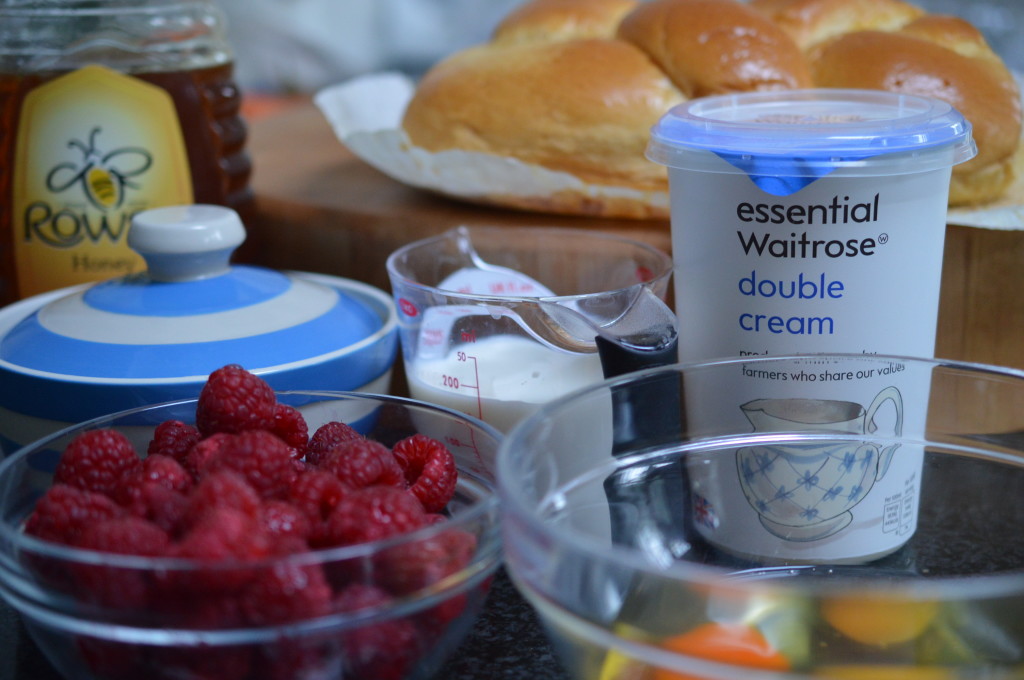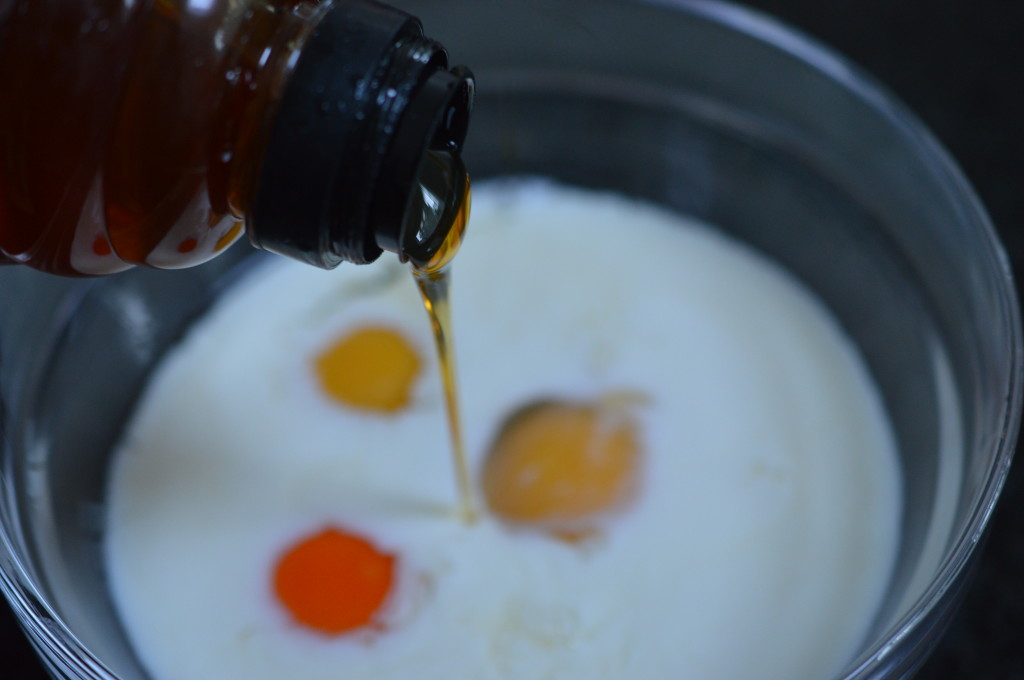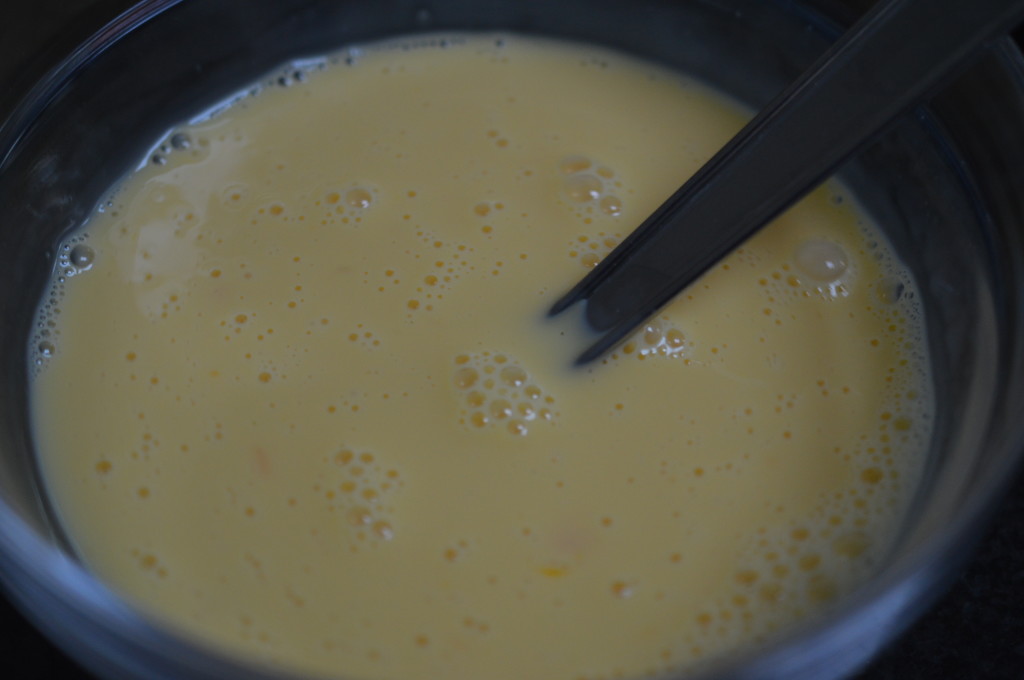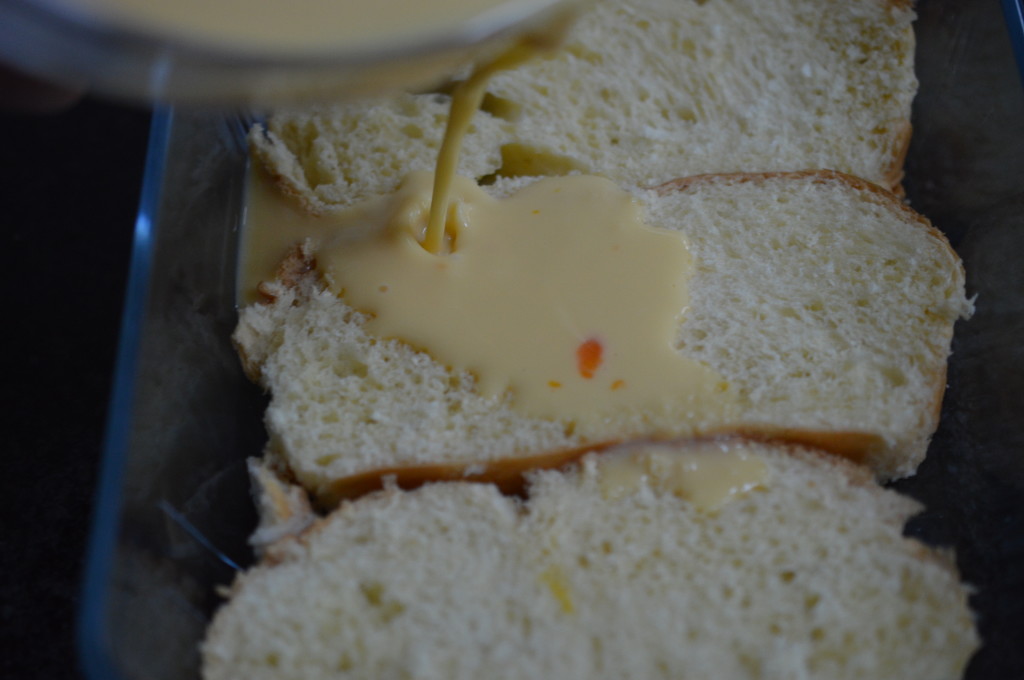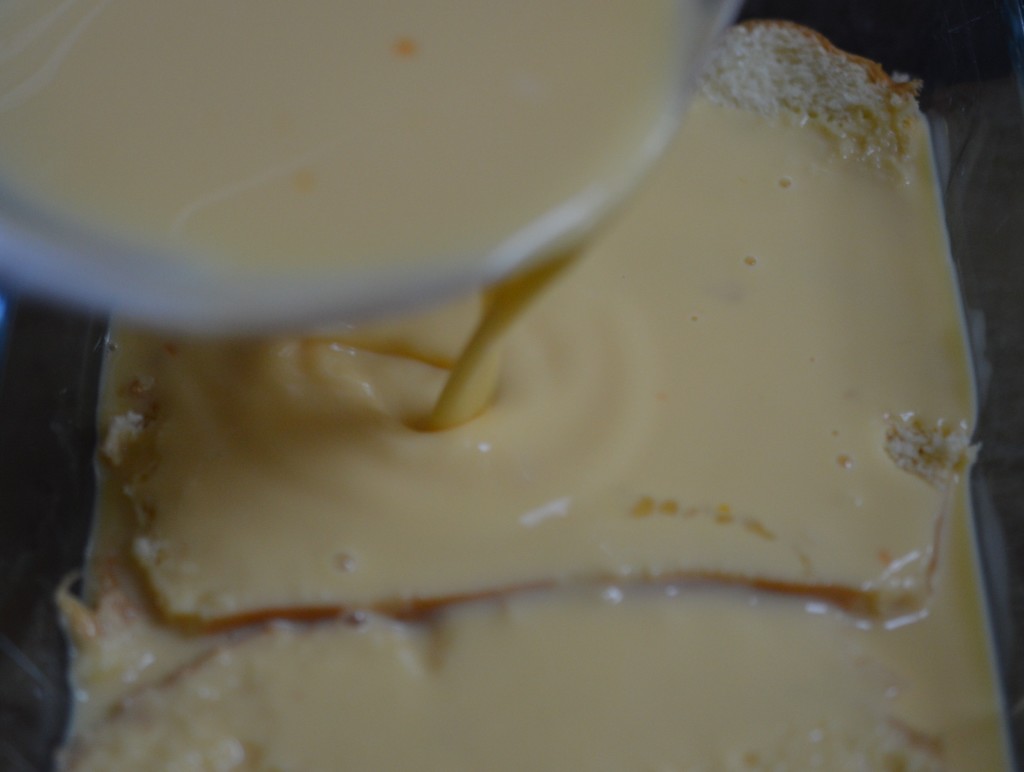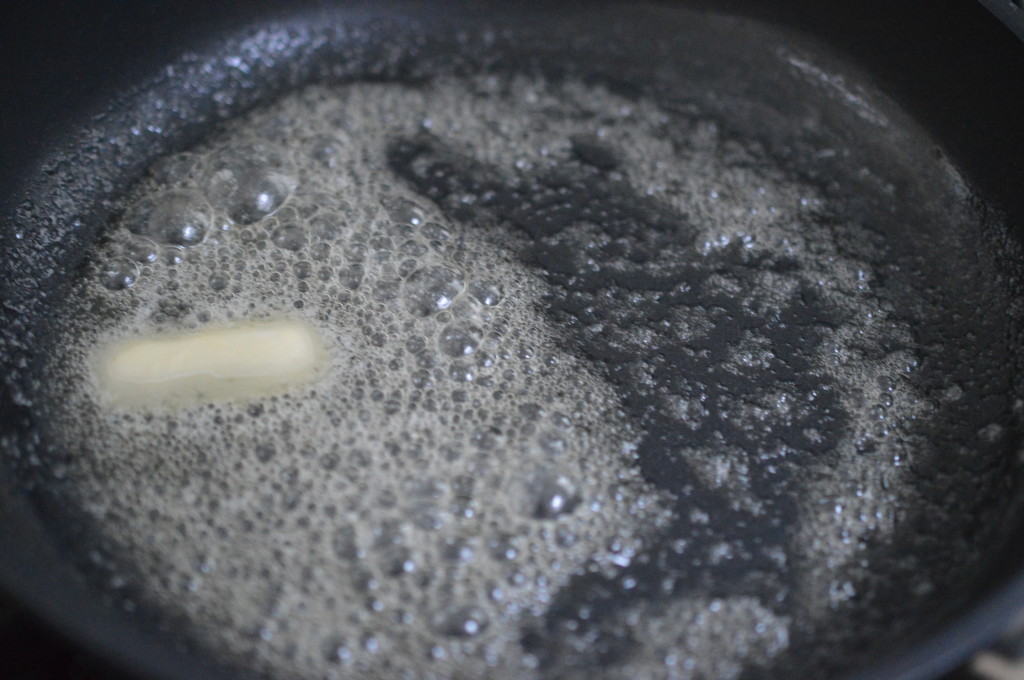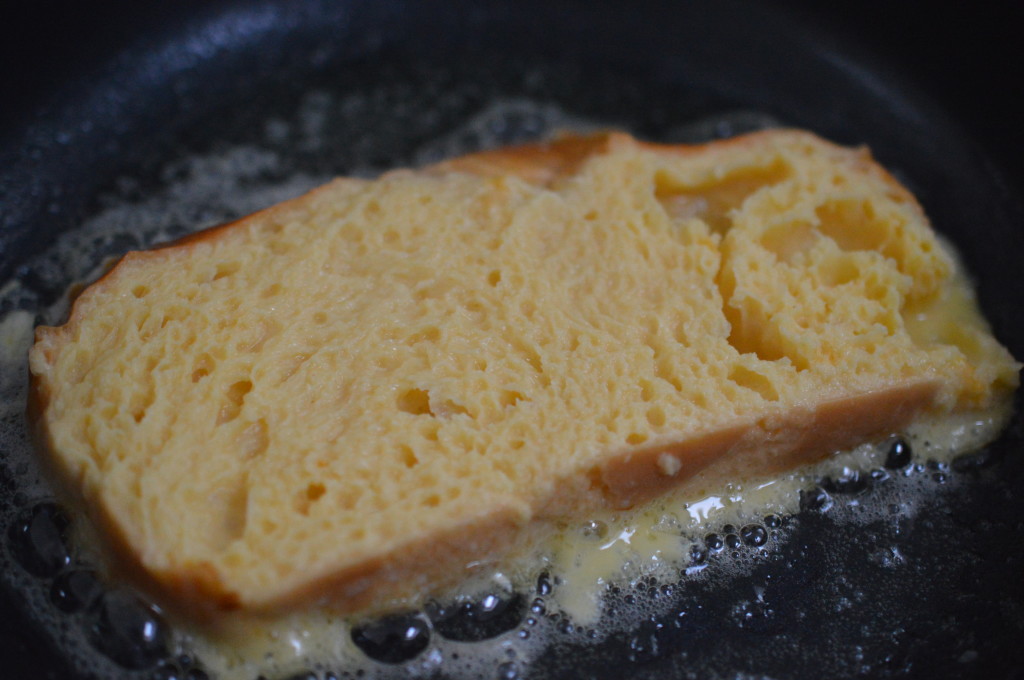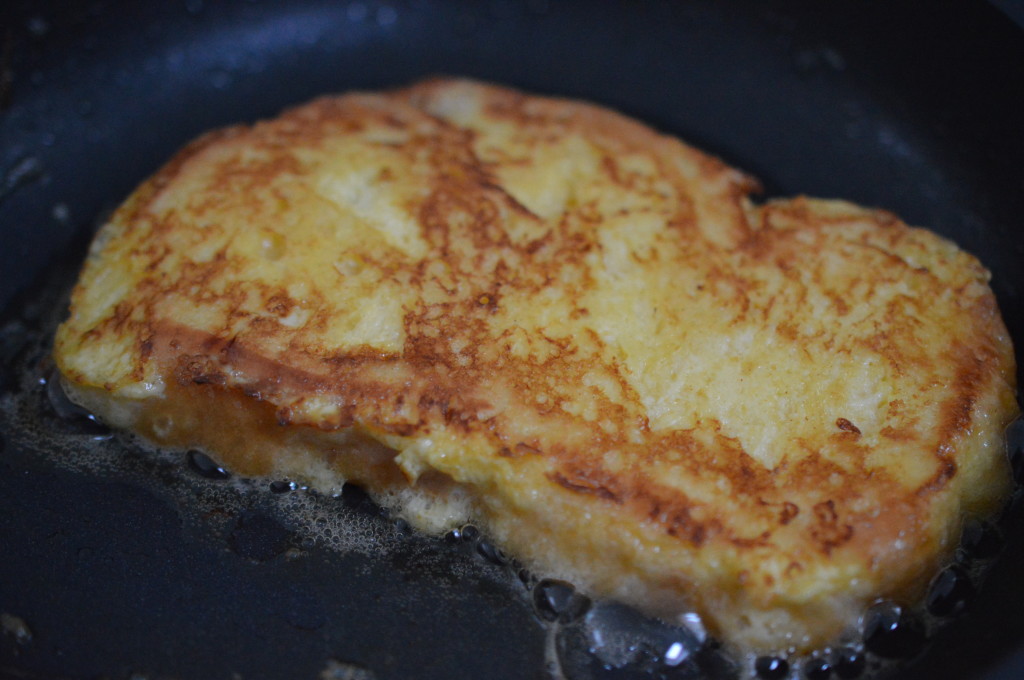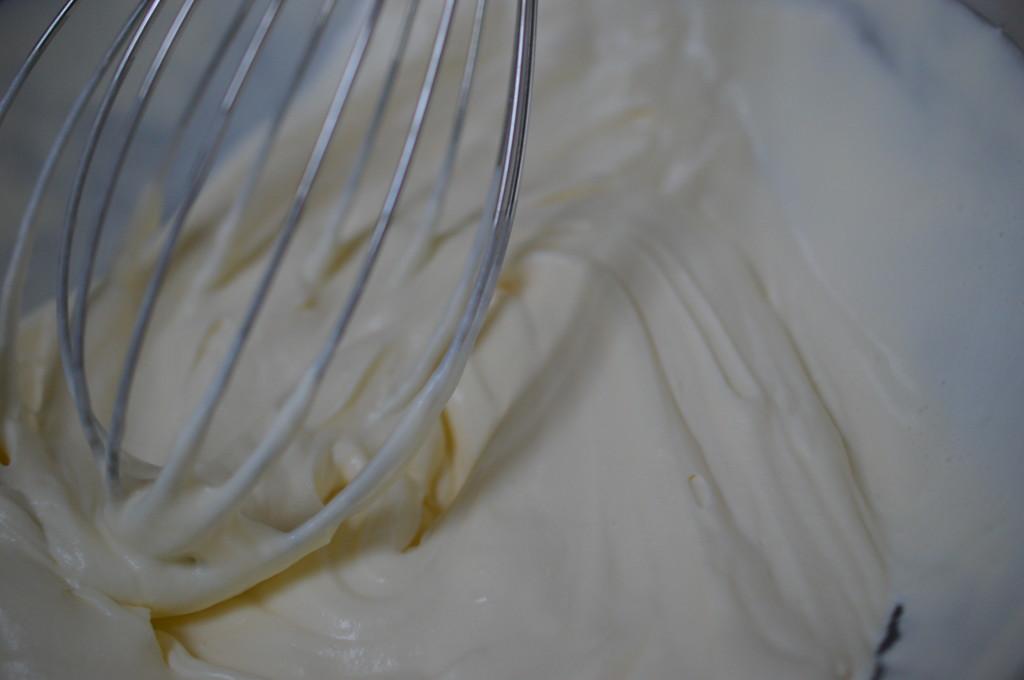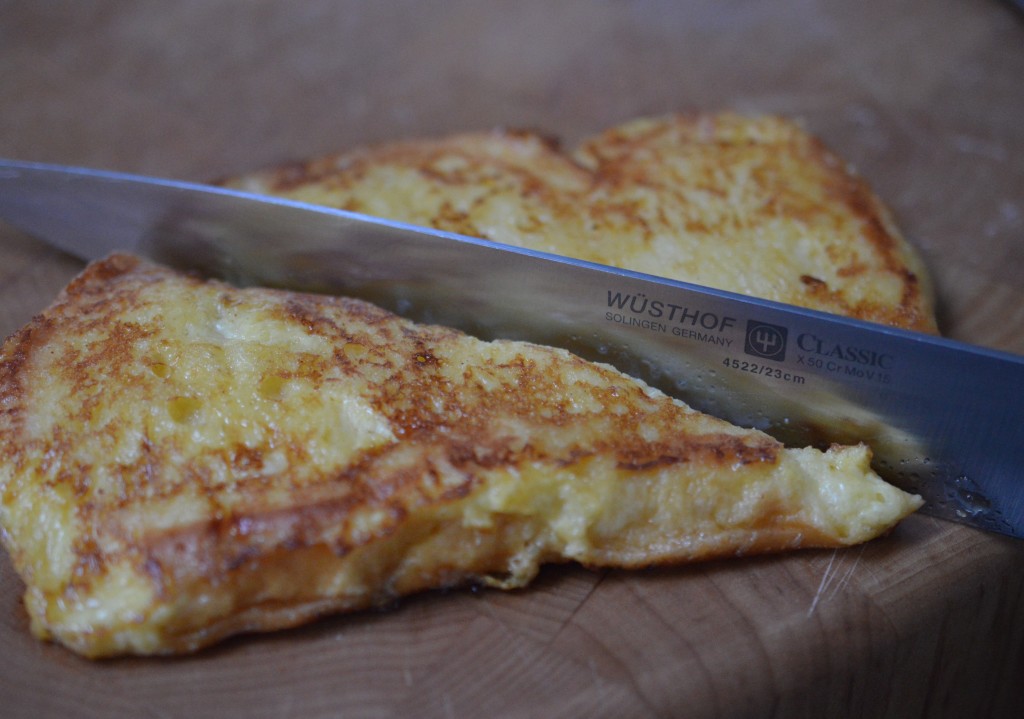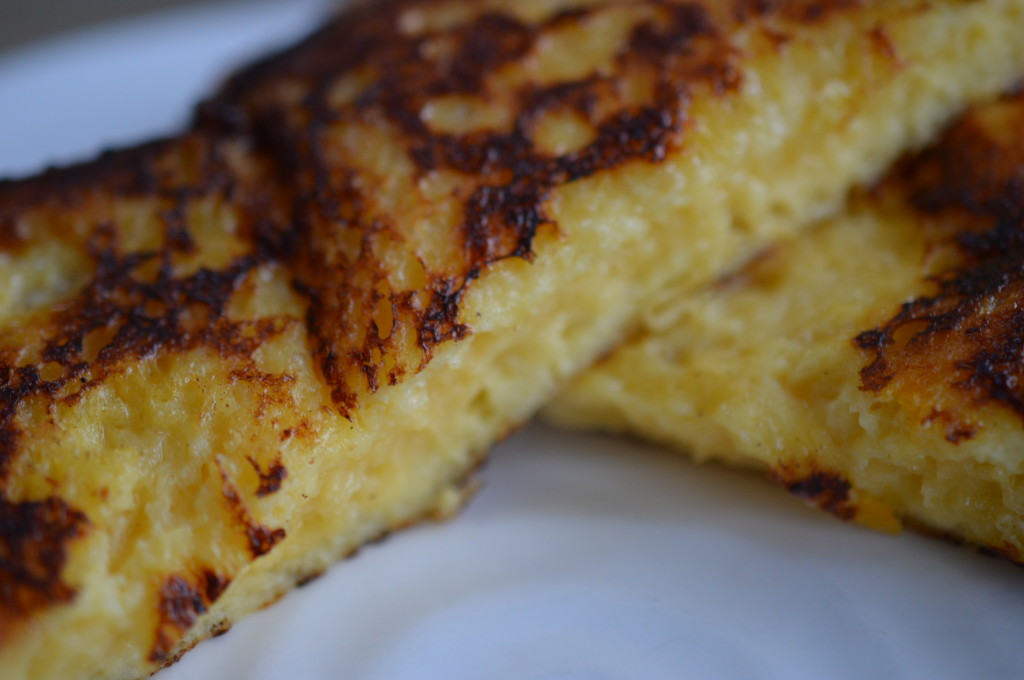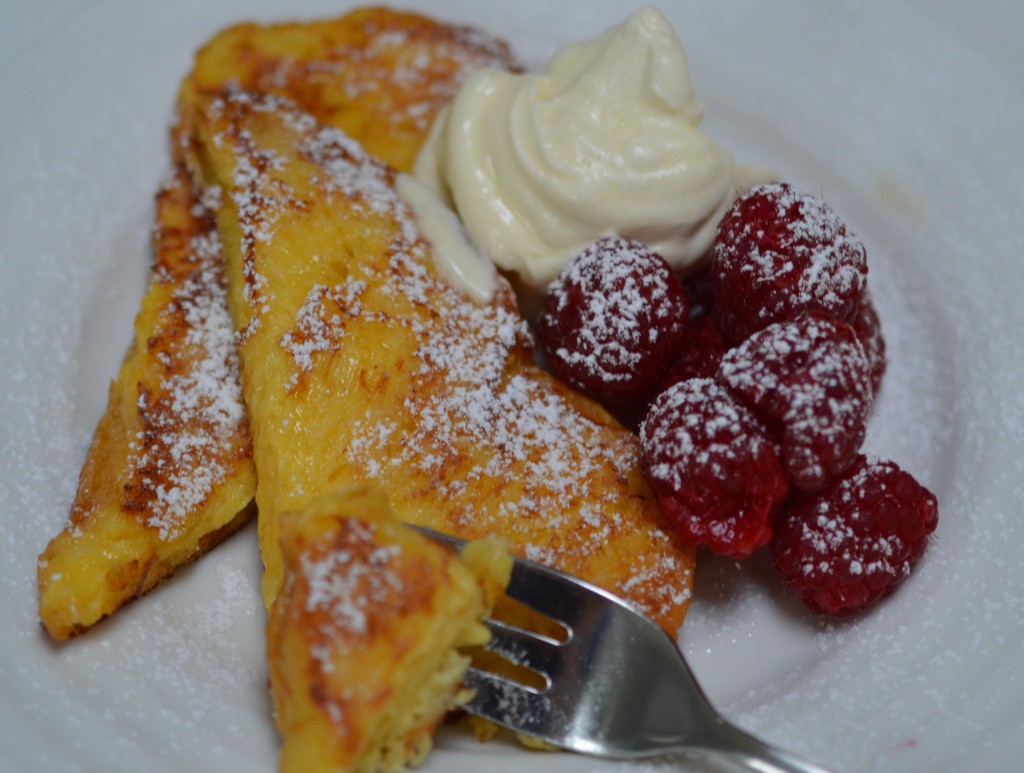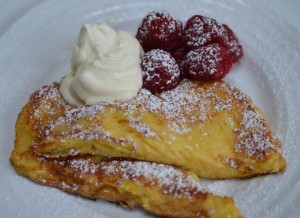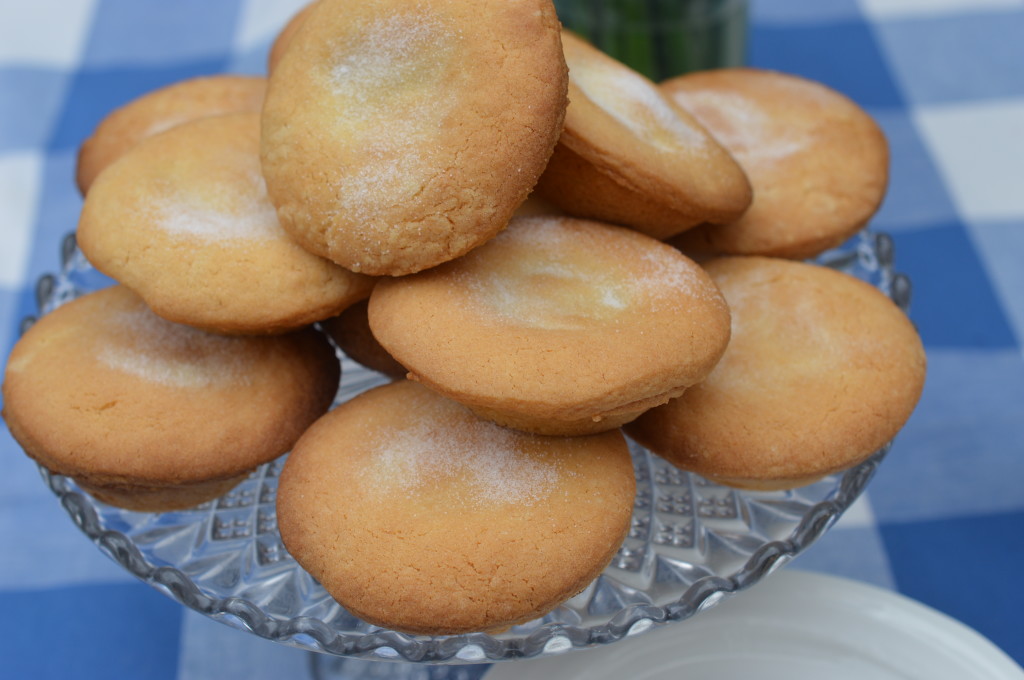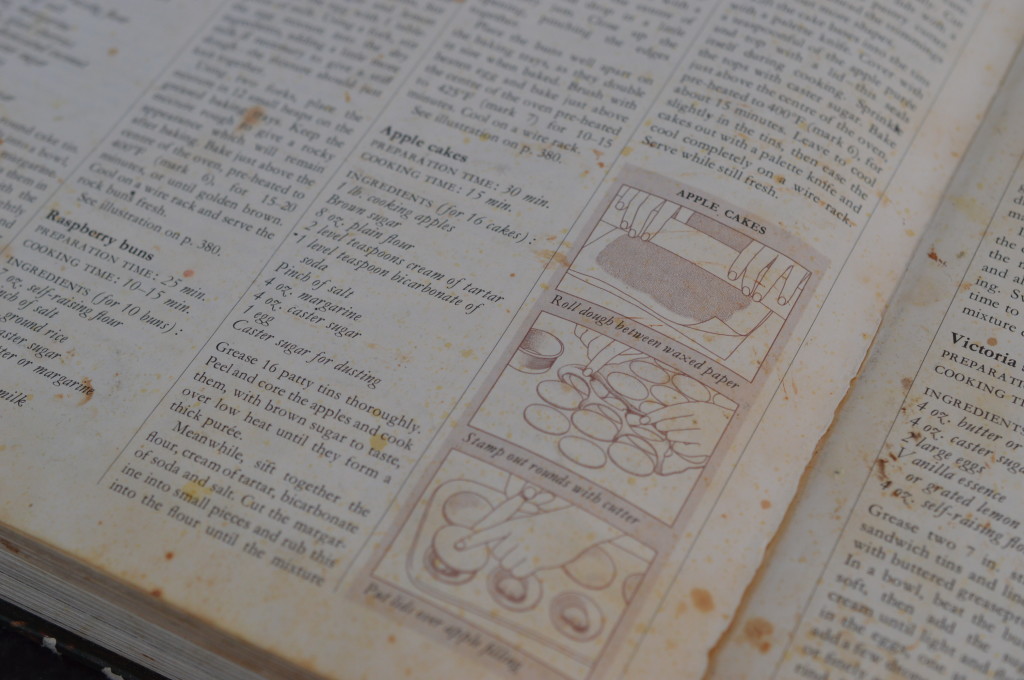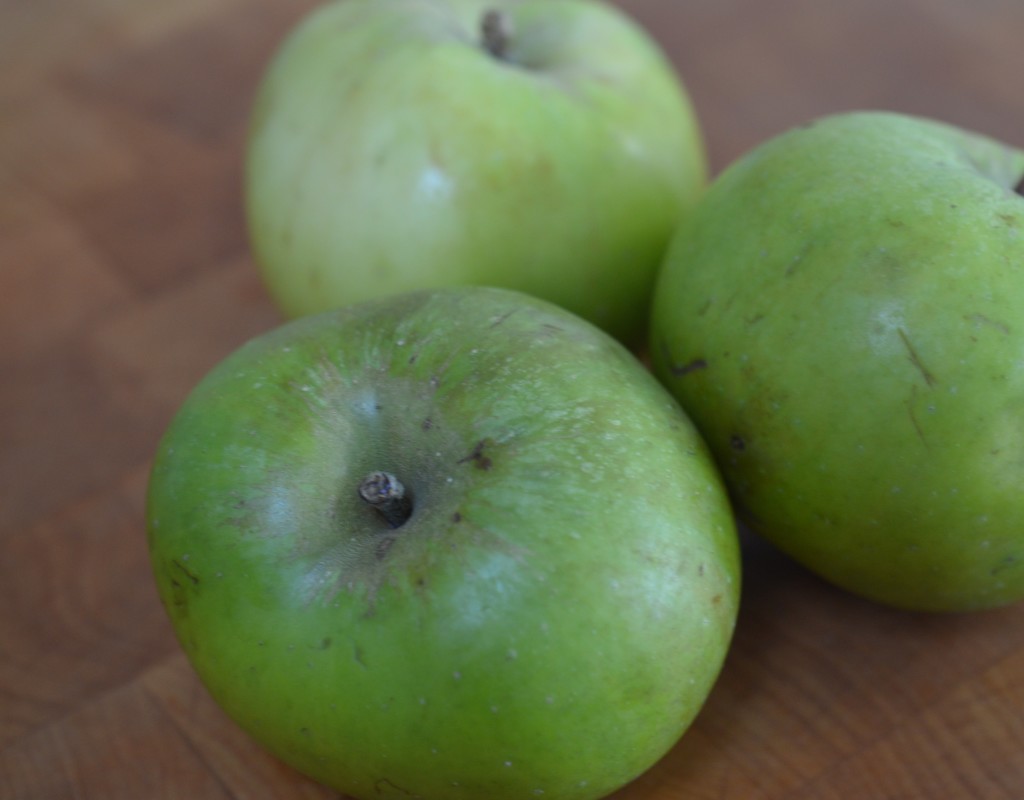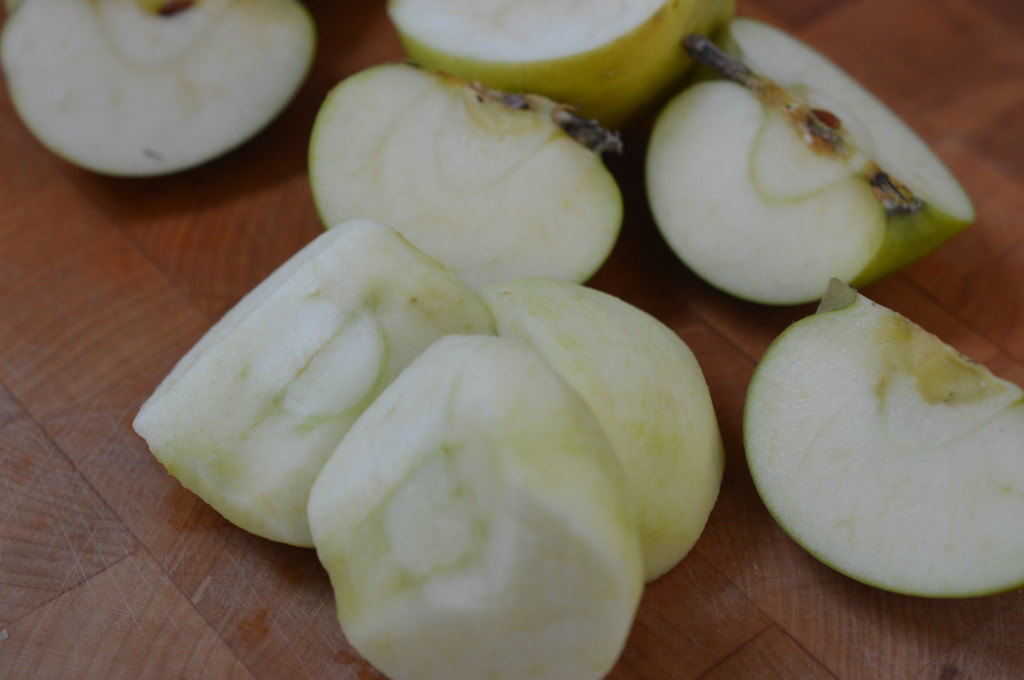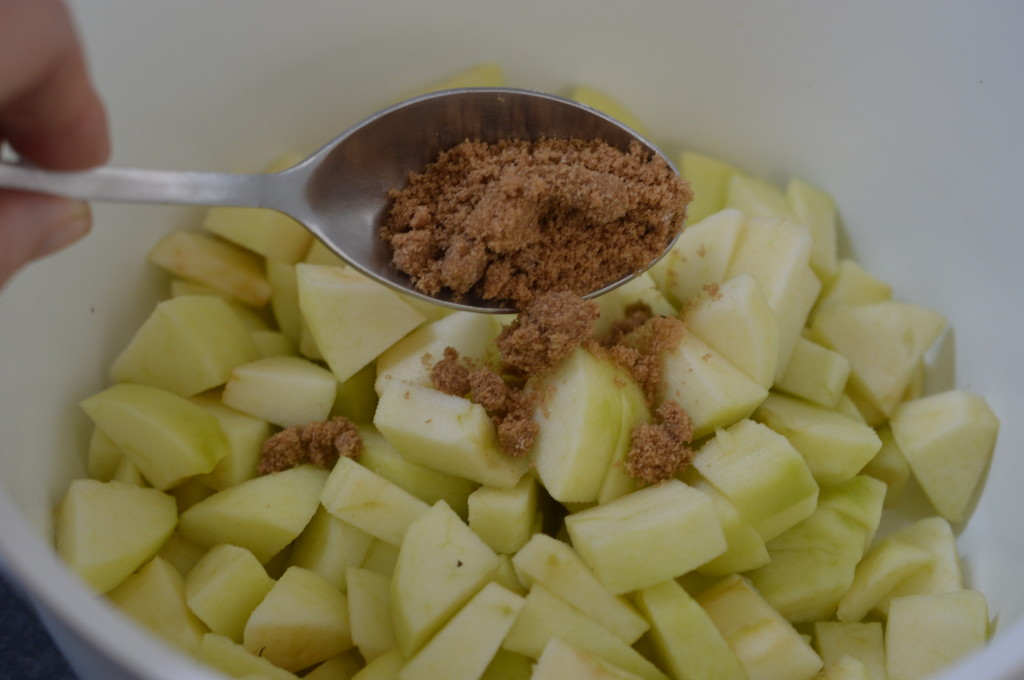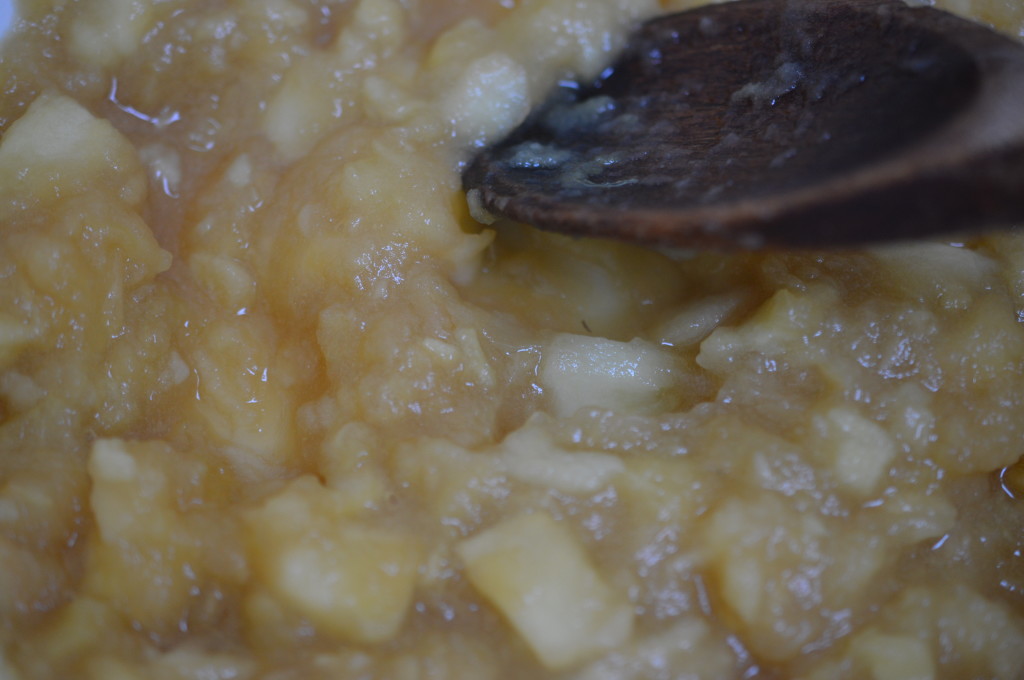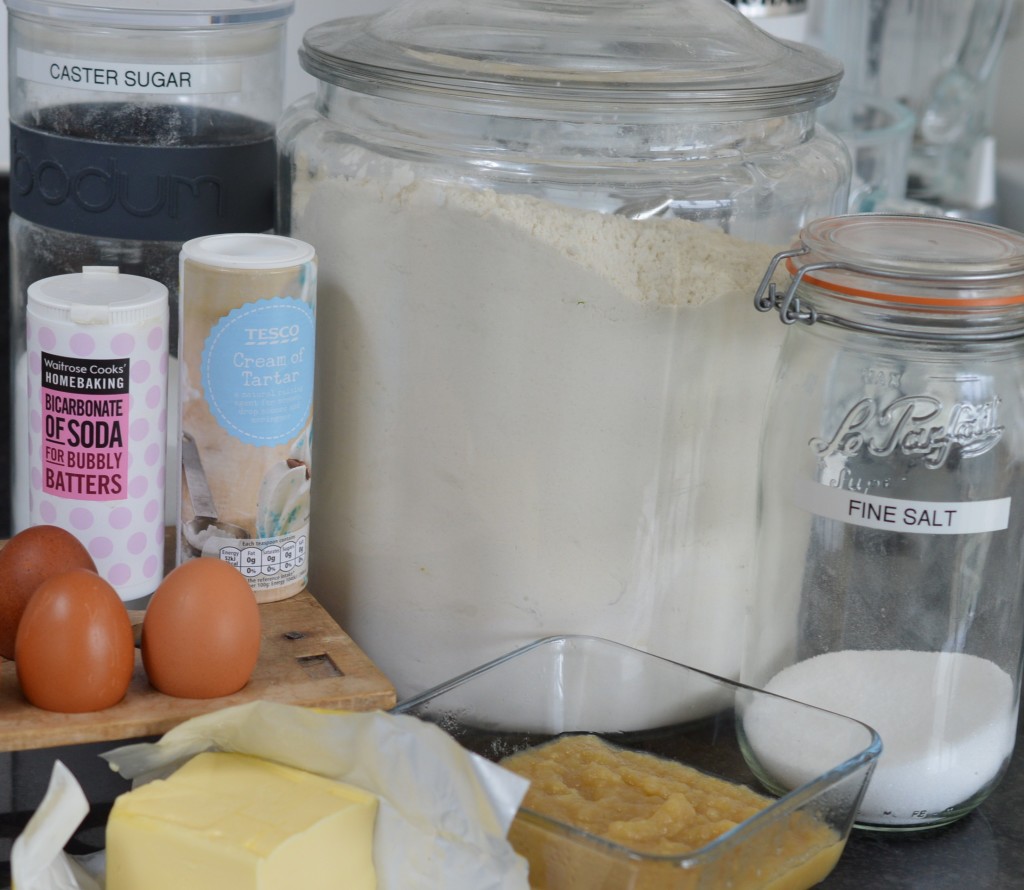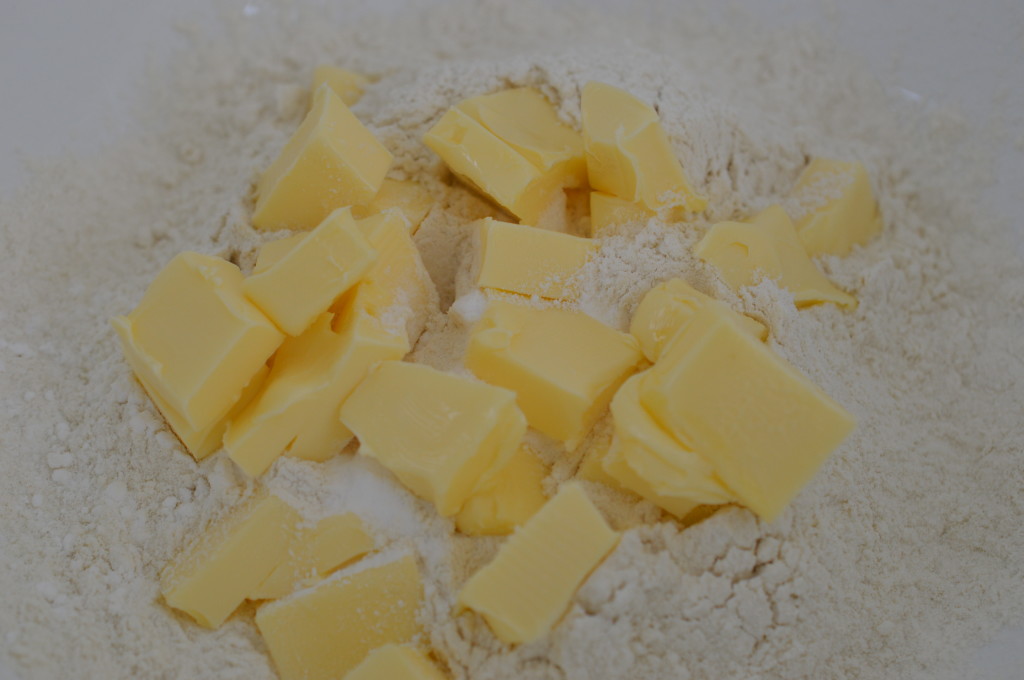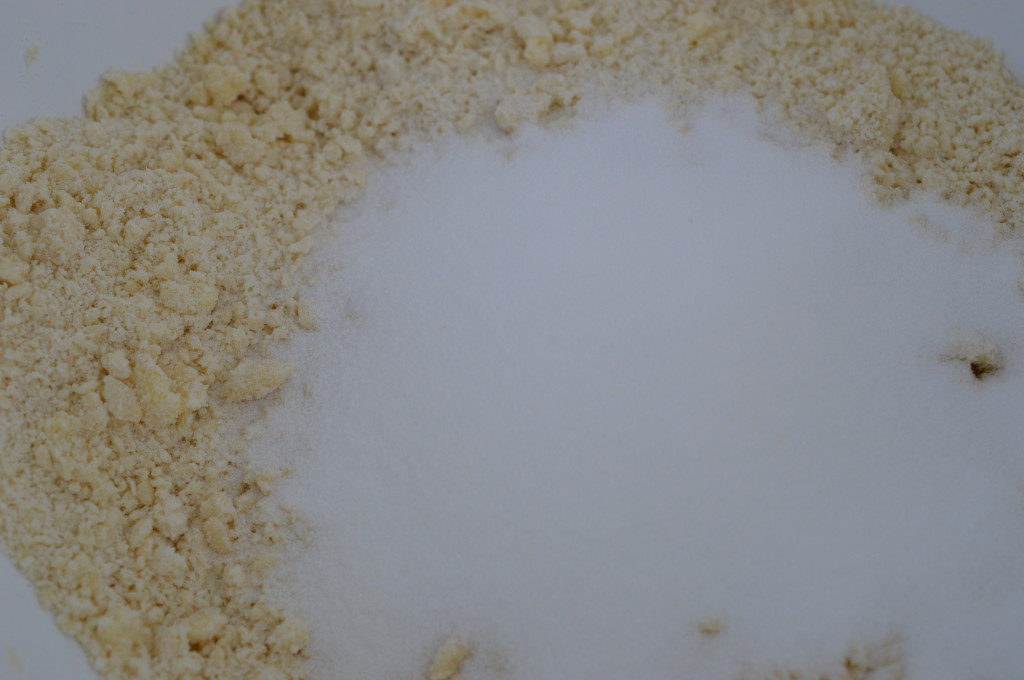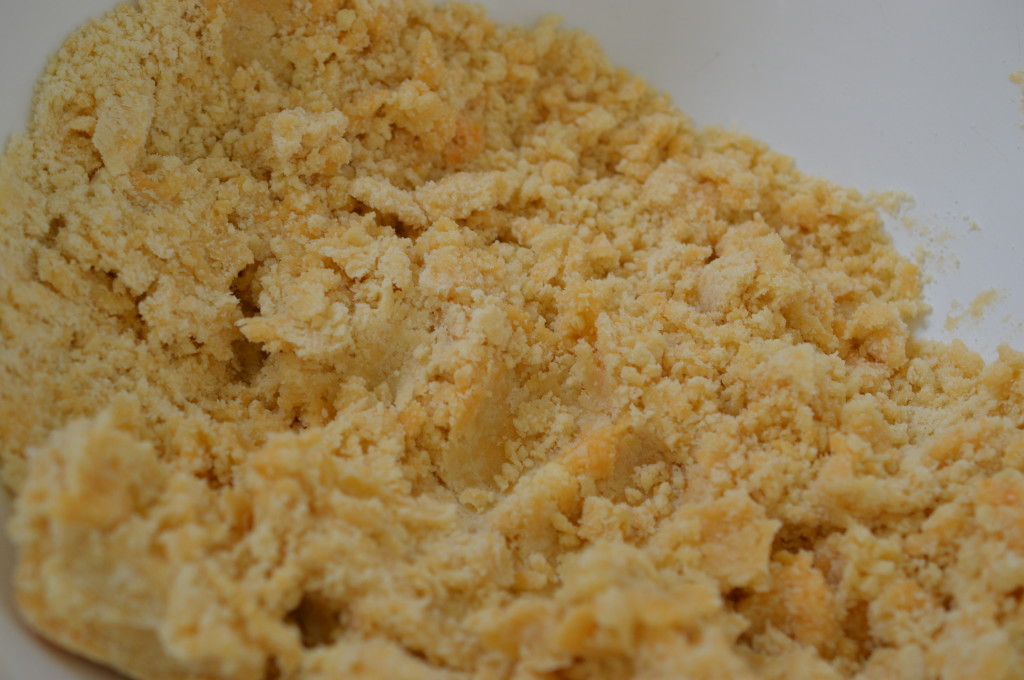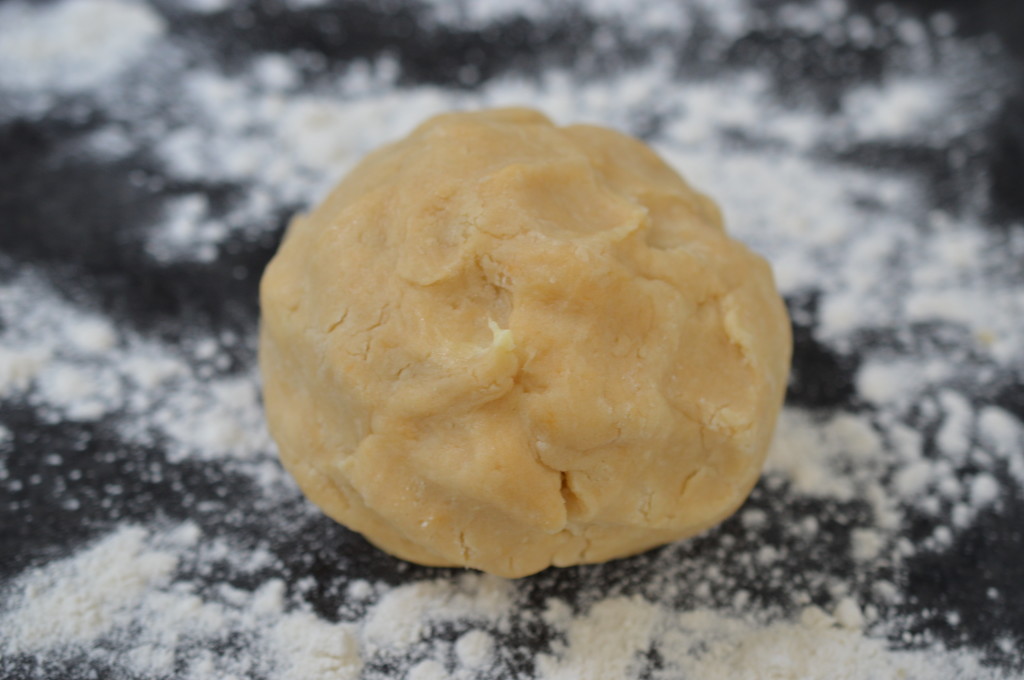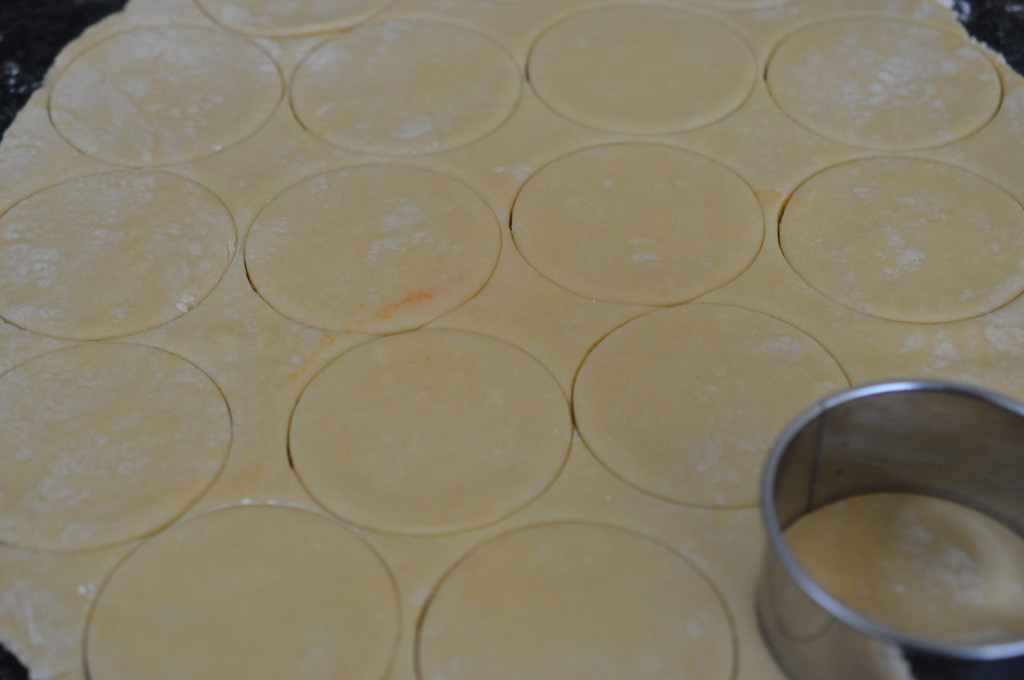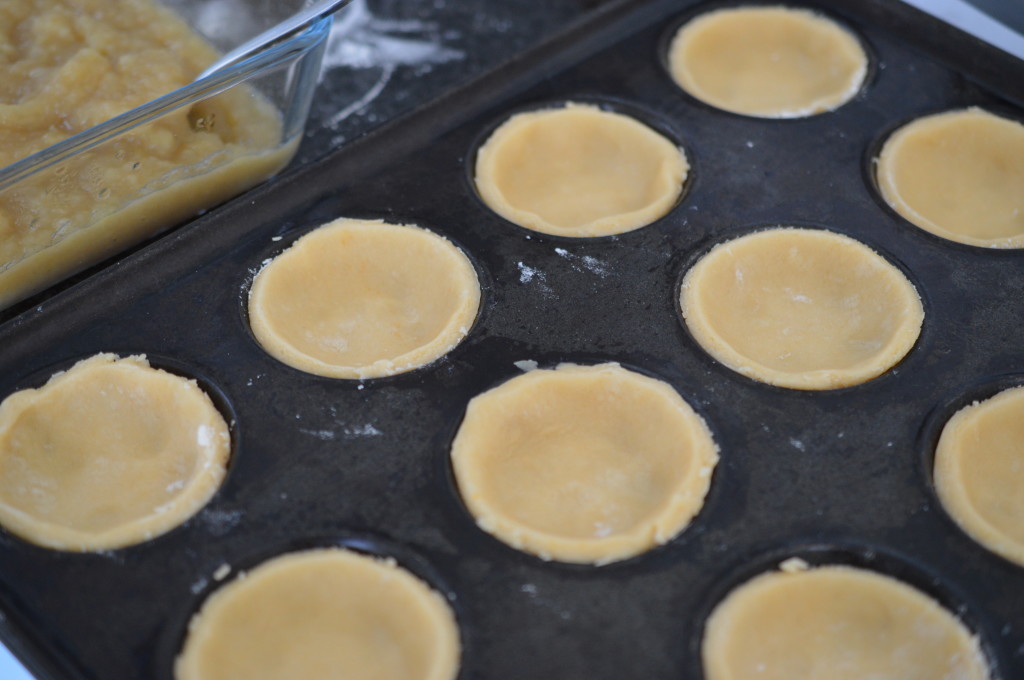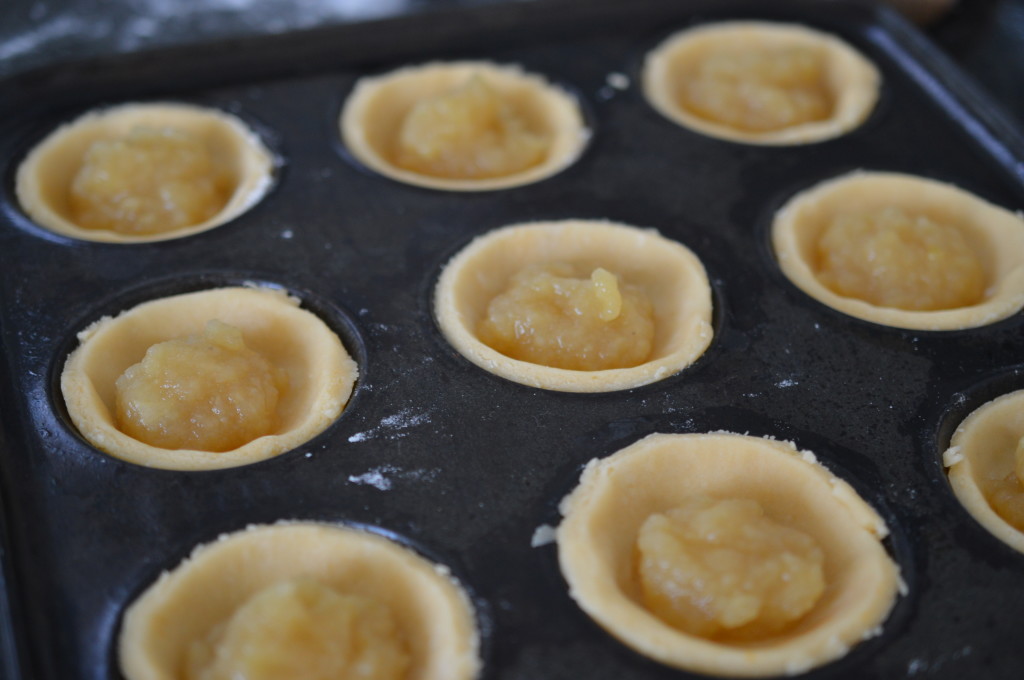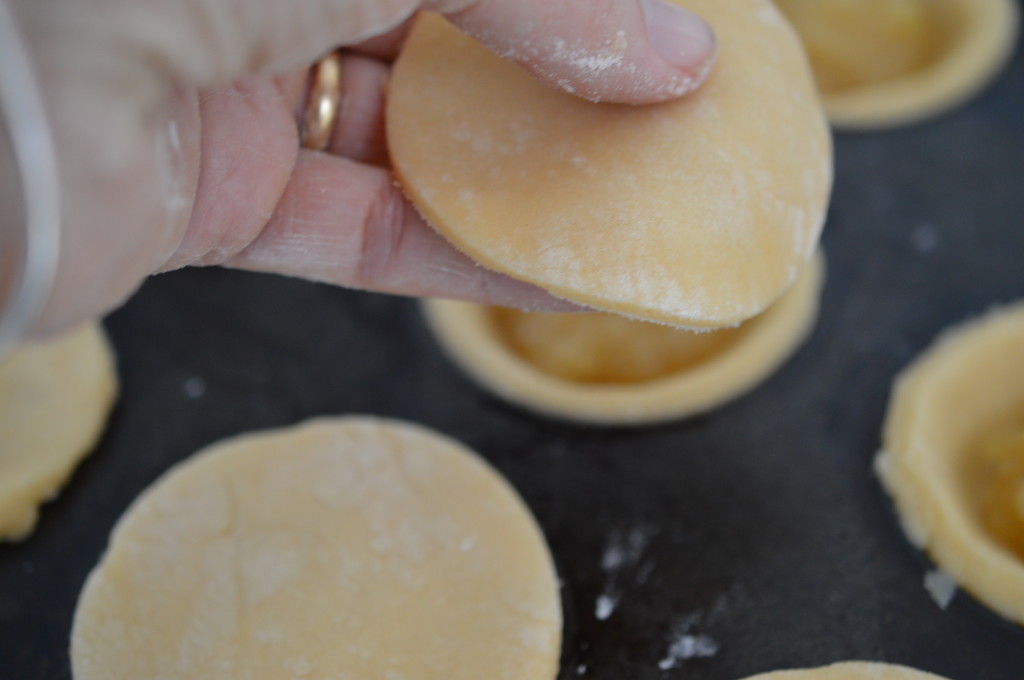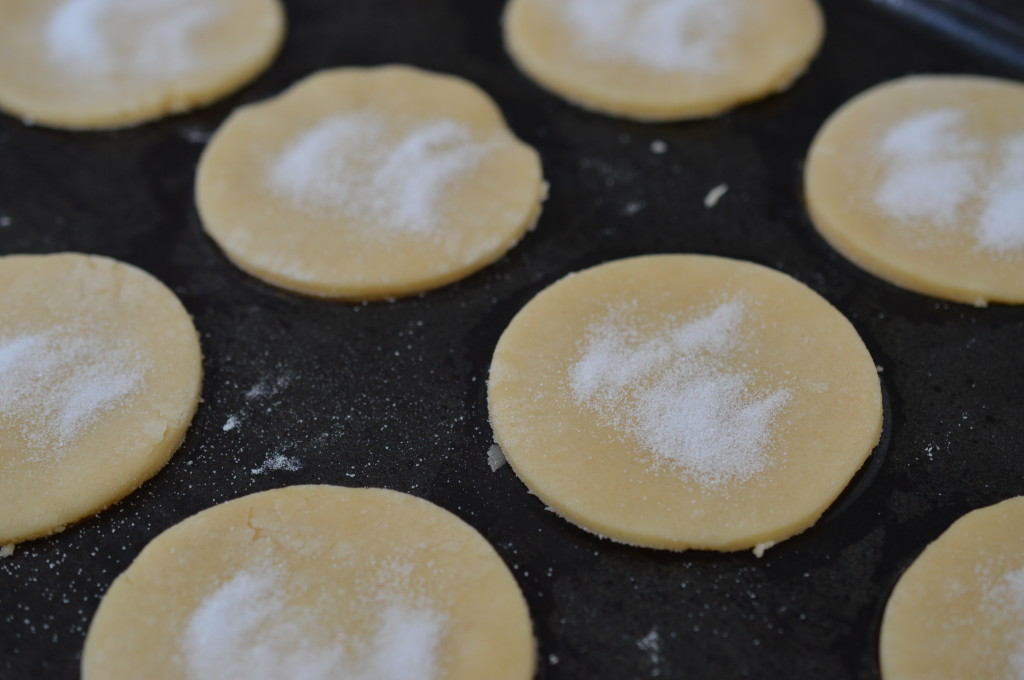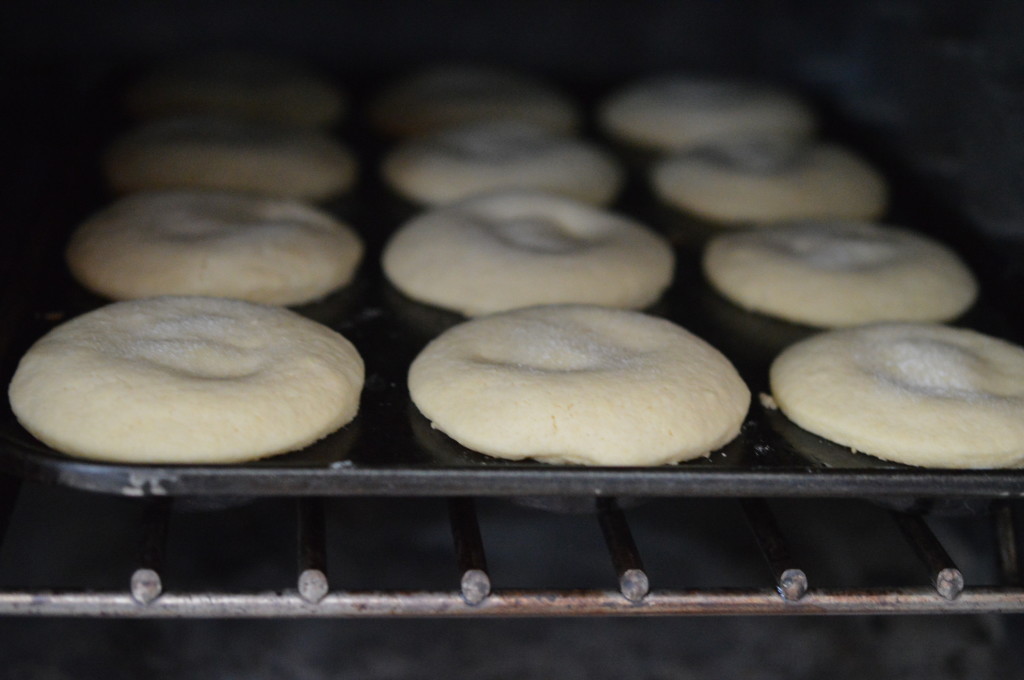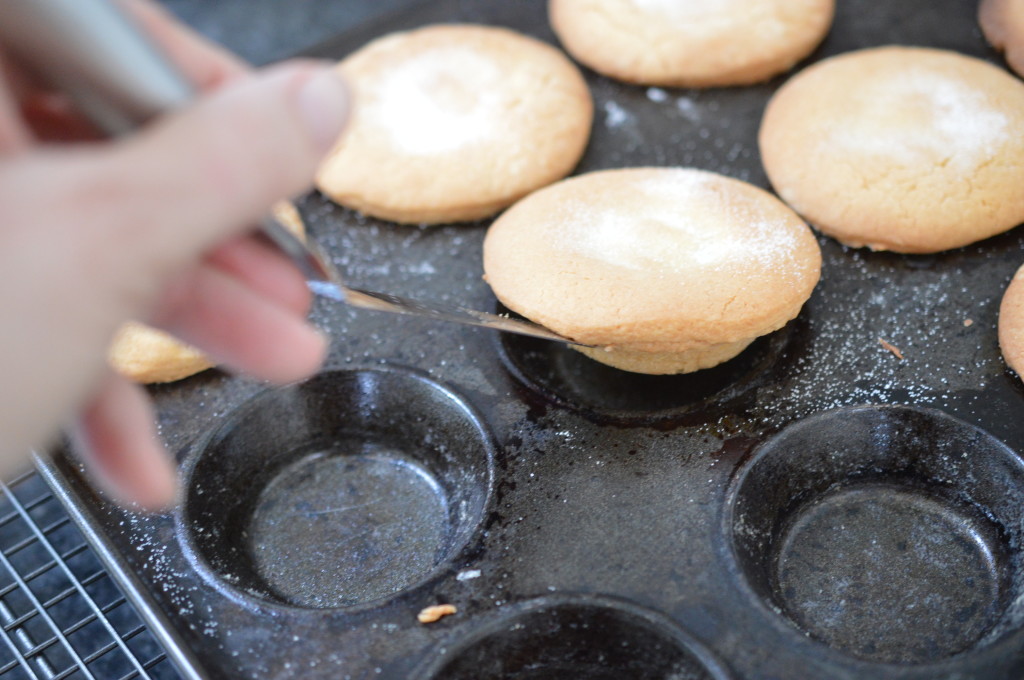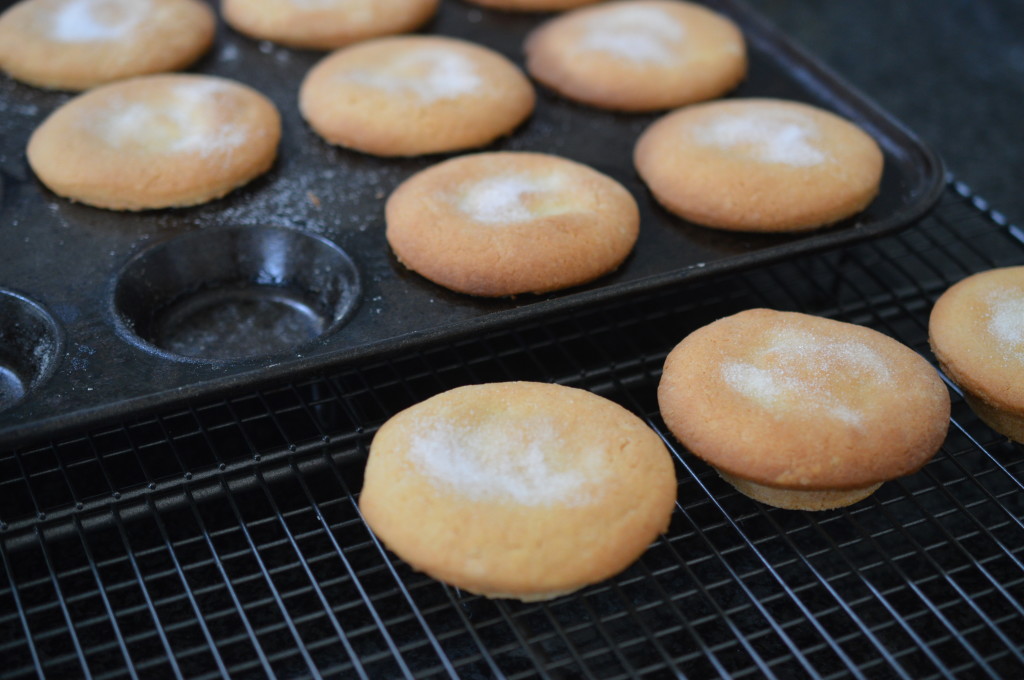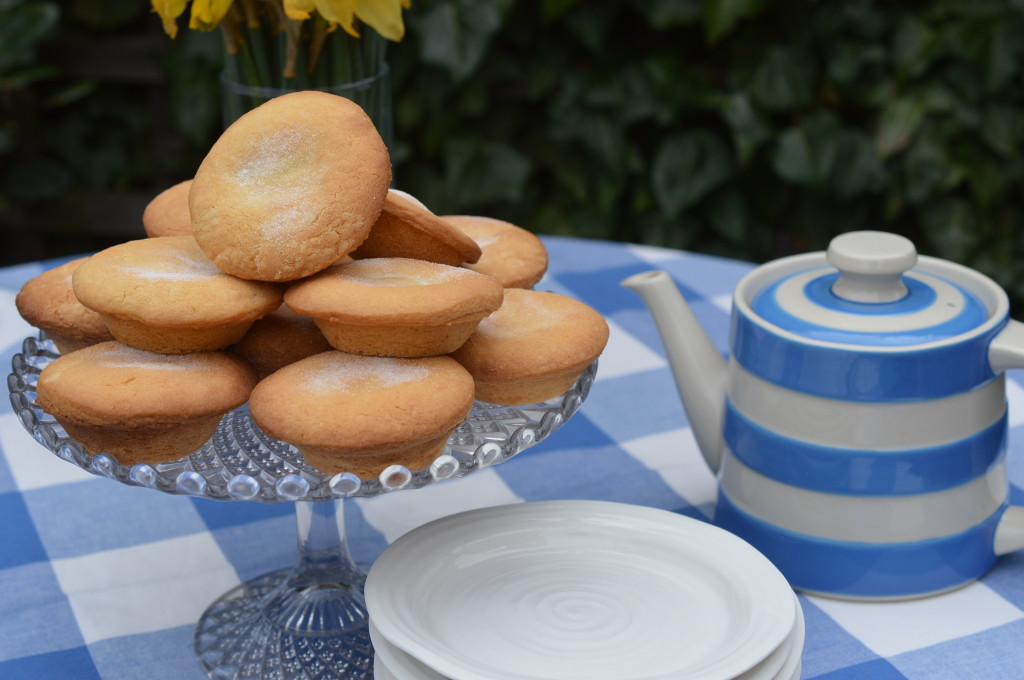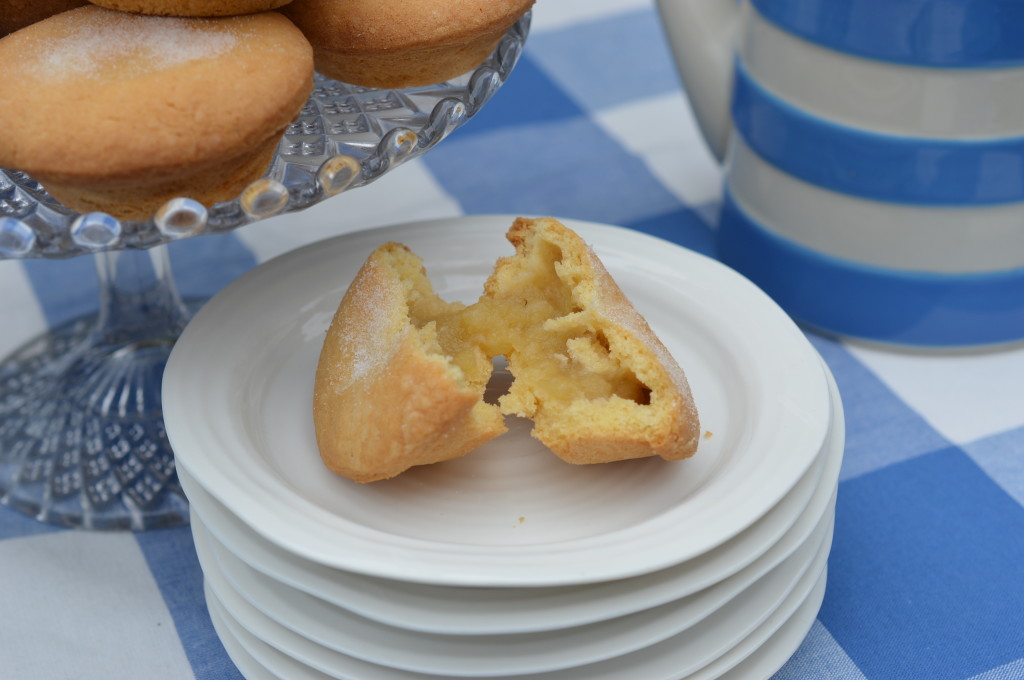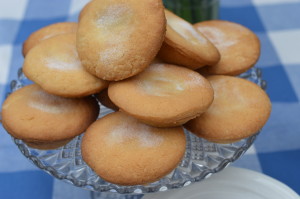Butterfly Cakes are a little piece of nostalgia for me. I was thinking .. I’d never seen them outside of a home kitchen when I decided to make these on Friday, but there’s clearly something in the air at the moment.
On Saturday, Nigel and I happened upon a new-to-us garden centre/food hall. There they were. Butterfly cakes (£3.00 for six), along with the first of the English strawberries and asparagus.
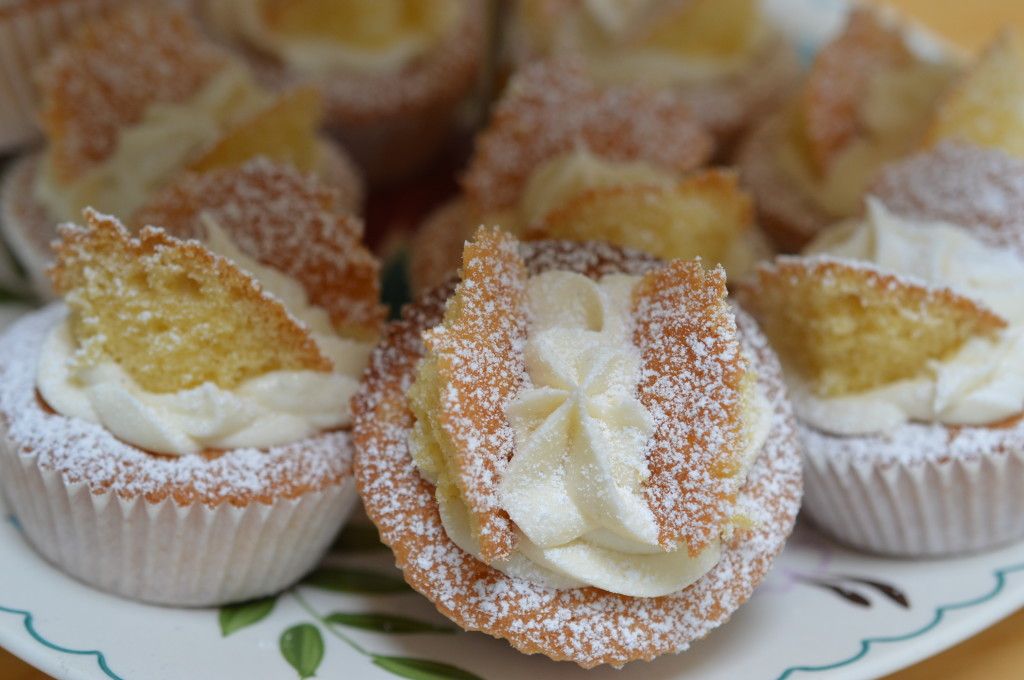
Then, this Sunday, one newspaper stated ‘Jamie Oliver slams schools who let pupils get away with making fairy cakes’. I imagine he’s being taken somewhat out of context since, of course, you want people to cook healthily but with tight school budgets and a chronic lack of equipment I think they’re a good starting point. Anything that builds confidence in the kitchen. Besides, I think balance is worth teaching too. A life of unremitting self-denial would be extremely dull .. and not achievable for most of us.
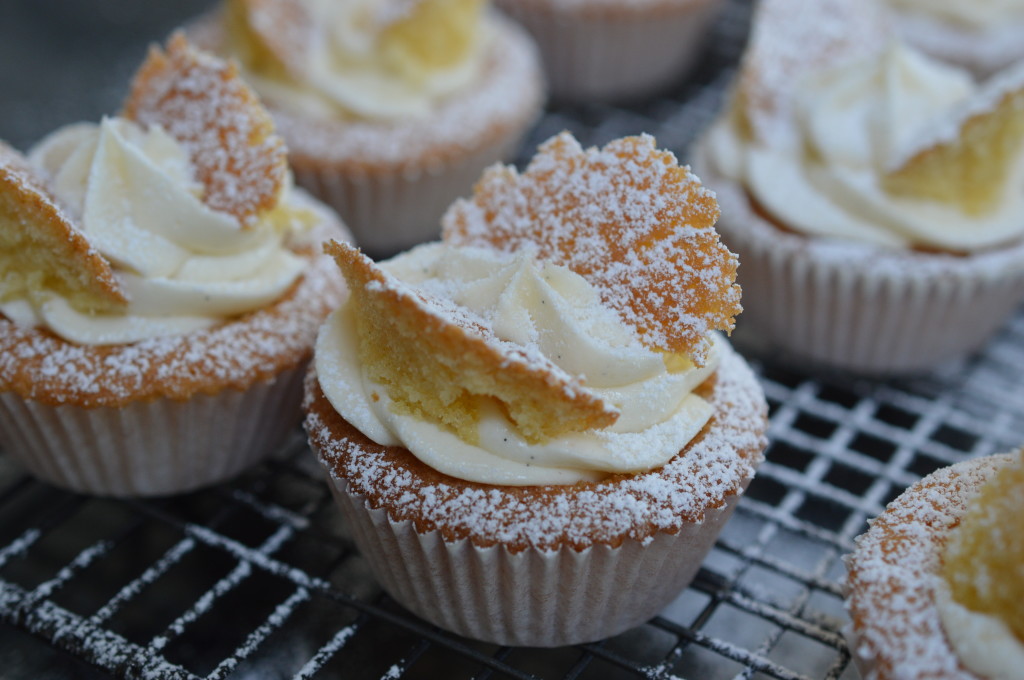
Butterfly Cakes are probably the first things I learnt to make. My brother had the disgusting habit of always eating the wings first and then licking out the buttercream. Is that over-sharing??? It’s an image which haunts me.
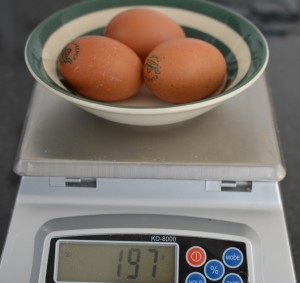
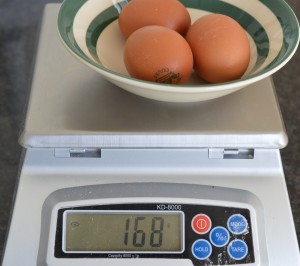
The cake batter is a Victoria sponge ‘sandwich’ cake mixture. That’s an equal quantity of butter, caster sugar, eggs and flour. Most recipes ask for 3 eggs for a ‘Victoria’ sponge which is only possible because supermarket eggs come ‘sized’. Even so, there can be significant differences.
I always weigh my eggs – in their shells. It doesn’t matter if you prefer imperial or metric – just stick to the same unit of measurement. You want the eggs at room temperature and not fridge cold. A fresh egg will give you better results than one that’s been hanging around.
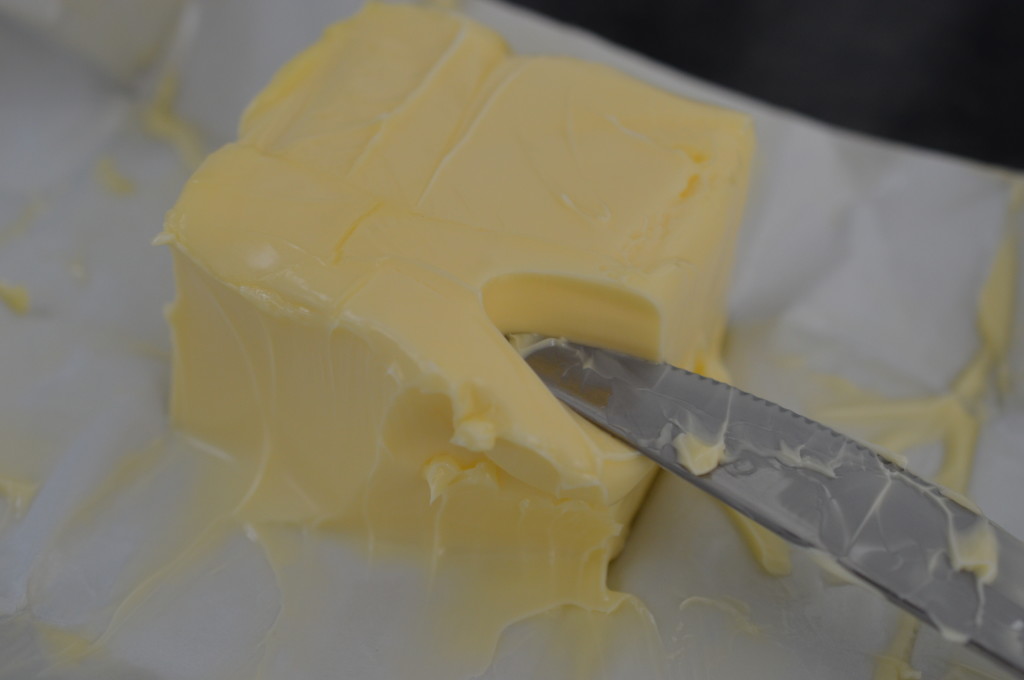
Then it’s that weight in softened butter. Imagine you are going to cream your butter and sugar with nothing but a wooden spoon. It needs to be soft. Even with the help of an electric mixer, cold butter will result in a ‘heavier’ cake.
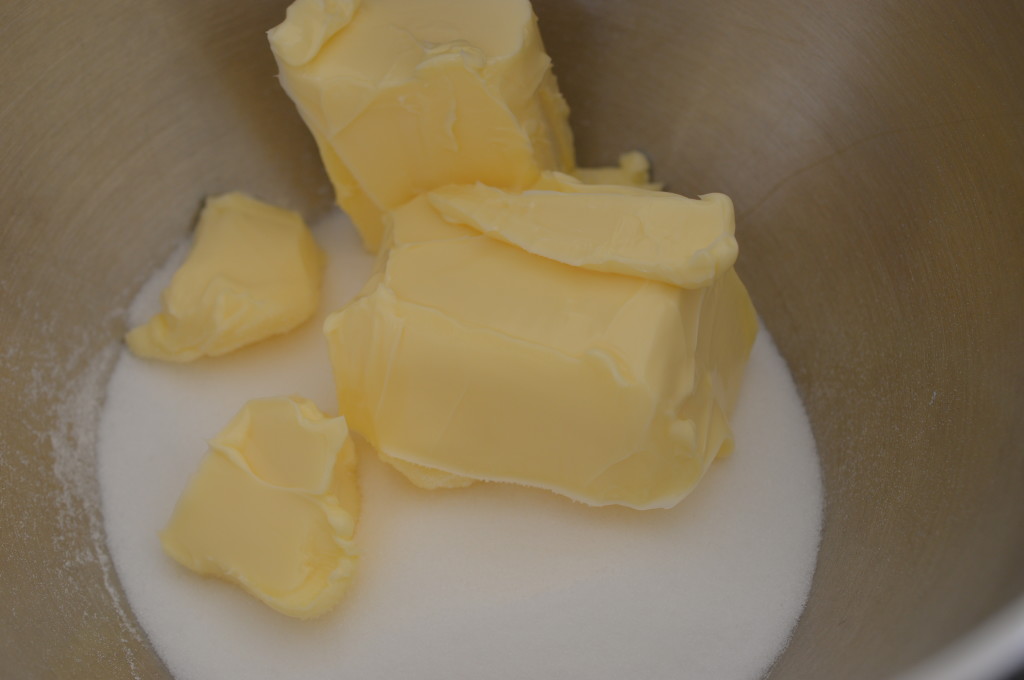
Put the butter and the same weight of caster sugar in your bowl. With an electric mixer it’s entirely possible to use an all-in-one method. That’s everything into the bowl and mix. Or a food processor. By hand, you have to separate out the stages.
Is there a difference in the finished cake if you separate out the stages? Yes. I think there is, but it’s tiny. If I were challenged to a blind tasting I might look like a twit. Do what seems easiest to you. Just don’t pay £3.00 for six!
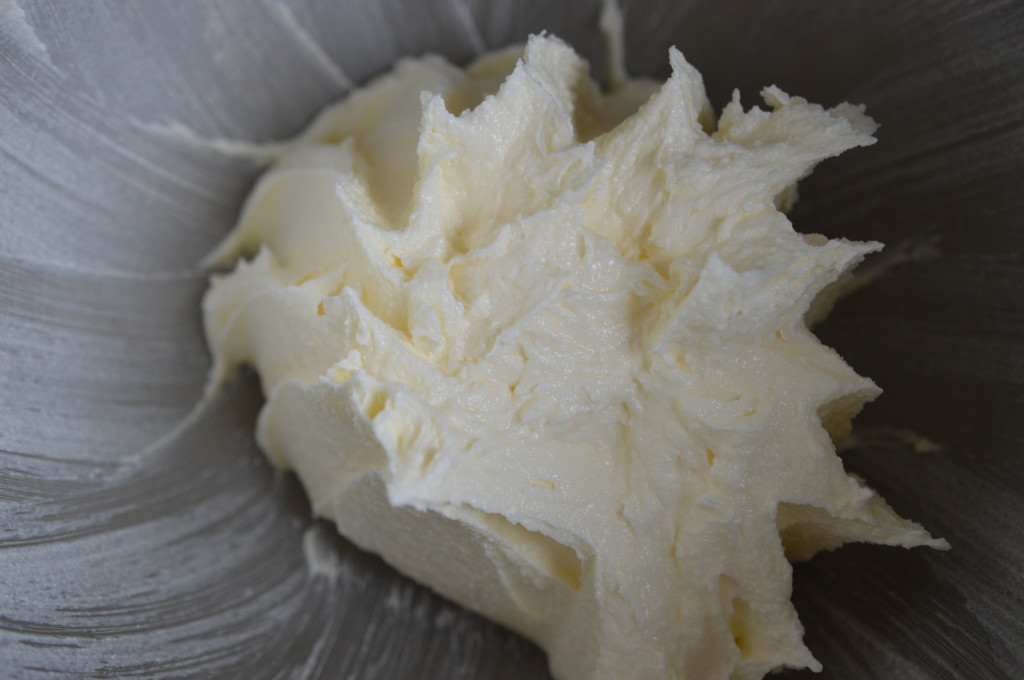
I ‘cream’ the butter and sugar together. You can’t overdo this stage. You want pale, light and fluffy. It will also increase in volume.
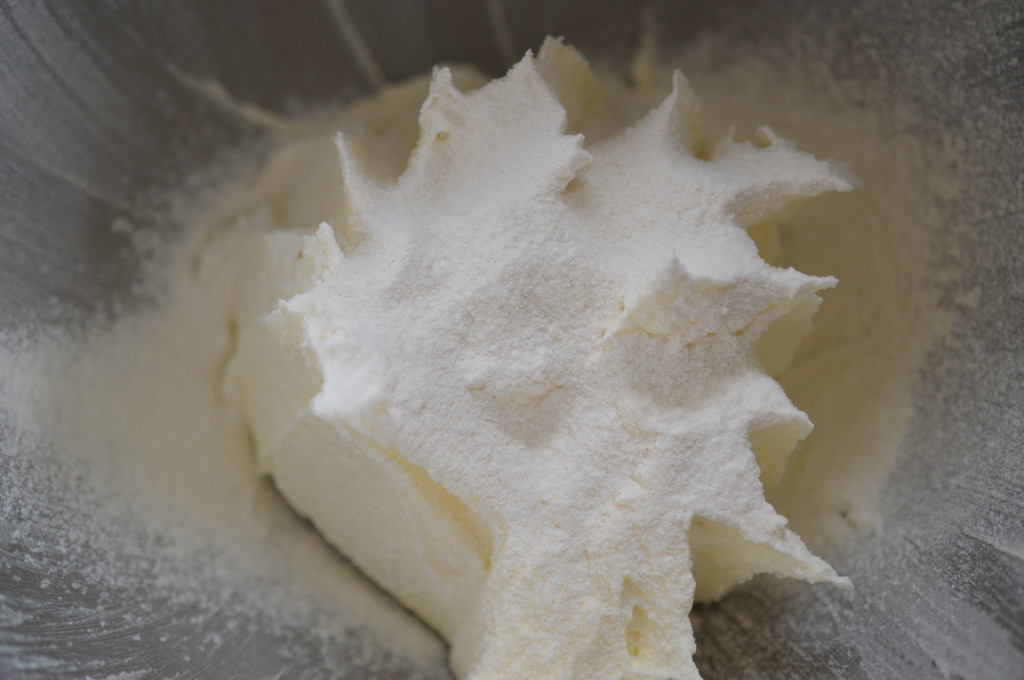
The same weight of self raising flour, whisked or sieved, will be waiting in a bowl. I sieve over a couple of tablespoons of that before adding the eggs. It’s my insurance policy against the mixture curdling. That’s when the eggs have given the butter/sugar mix the appearance of cellulite. The reason will be not ‘beating’ an egg in sufficiently well before adding the next one and/or your ingredients not being at room temperature. If it happens, just add a little bit of your flour and ‘beat’. Your cake won’t be as light as it might have been otherwise, but …. Really, it’s just cake! Let’s not worry.
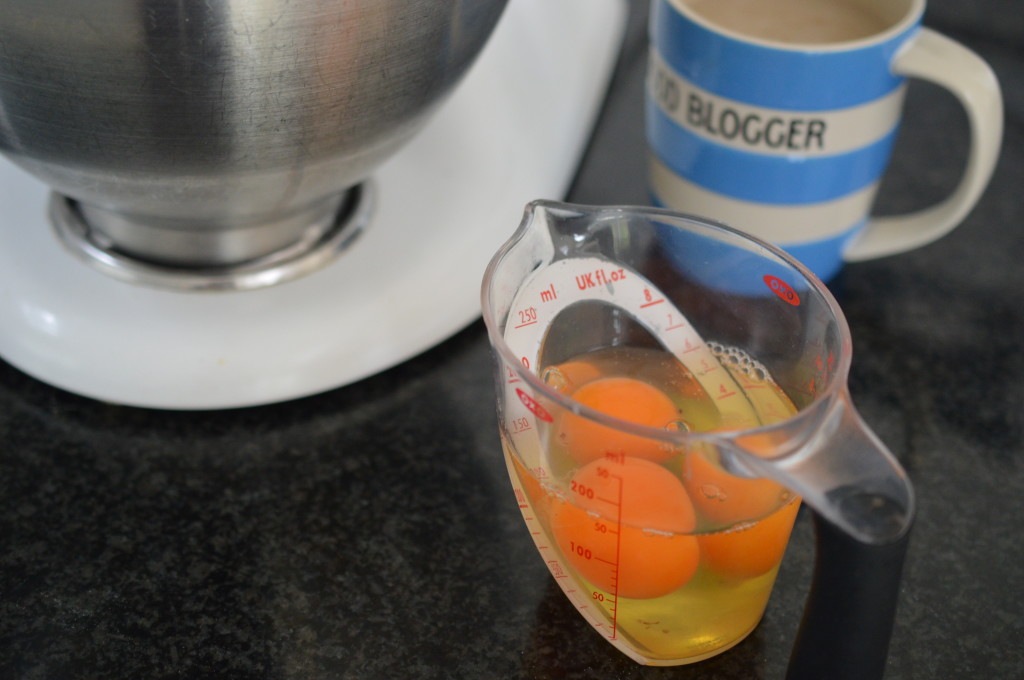
Then it’s the three eggs – one at a time. I find it easiest to break the eggs into a jug. In the normal run of things (i.e. when you aren’t trying to take sequential pictures) it means you don’t have to stop the mixer.
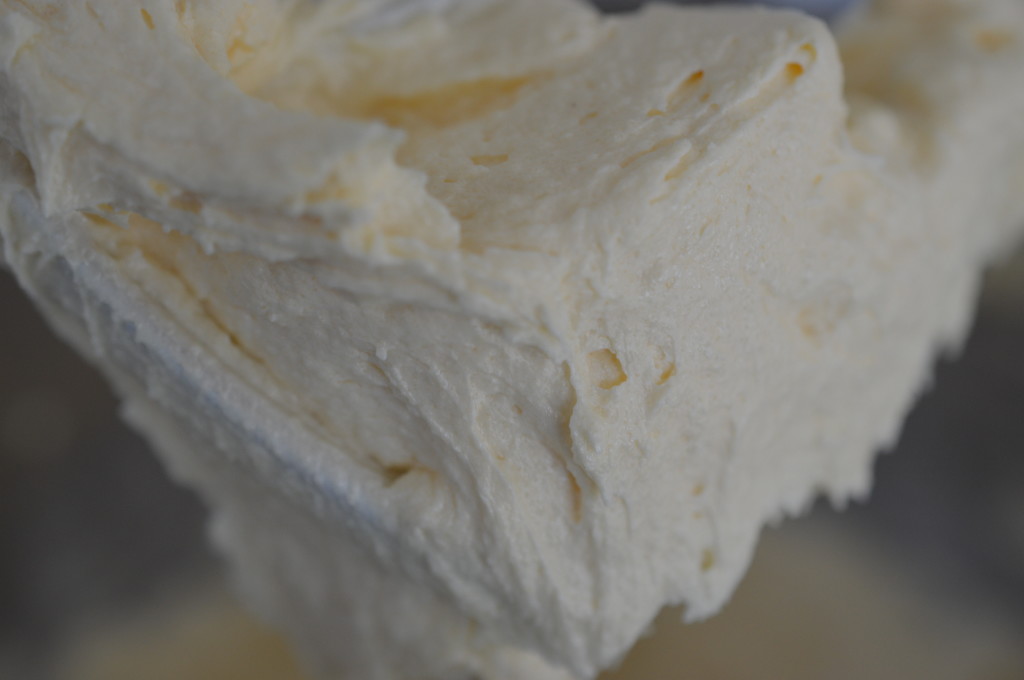
Beat the first egg in thoroughly before adding the second.
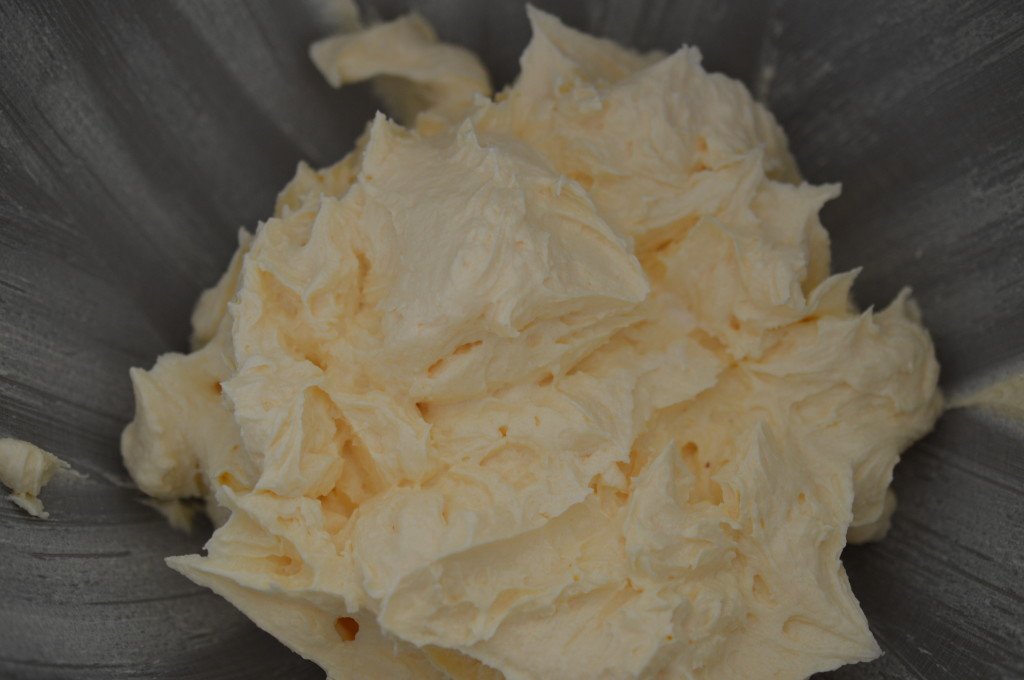
Then add the second. Beat. And then the third. Beat.
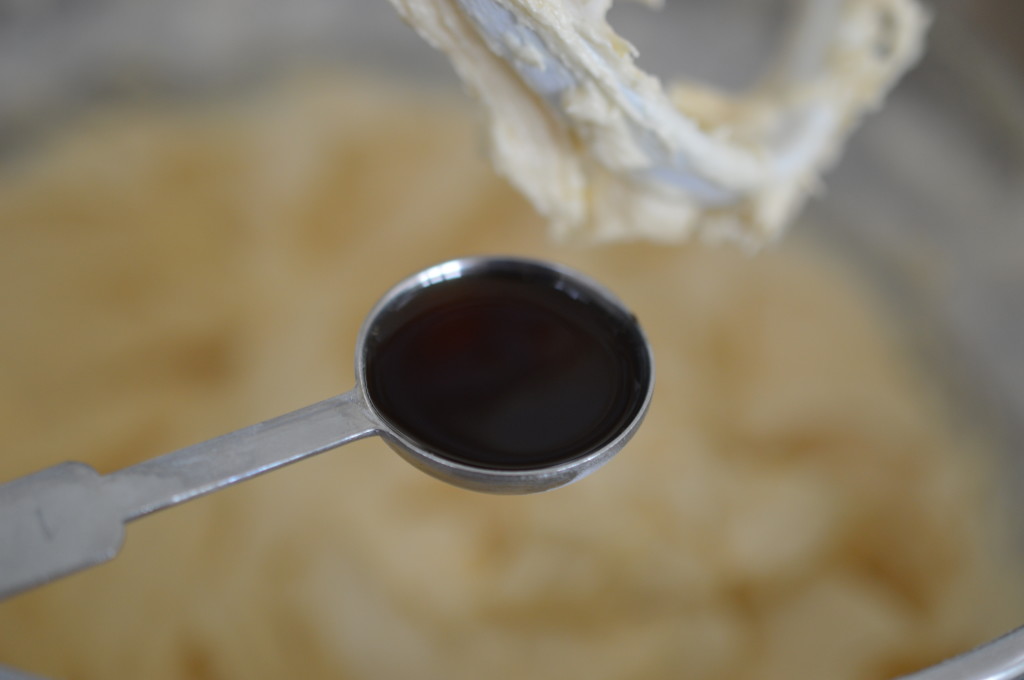
Now it’s the vanilla. 1 tsp of good vanilla extract.
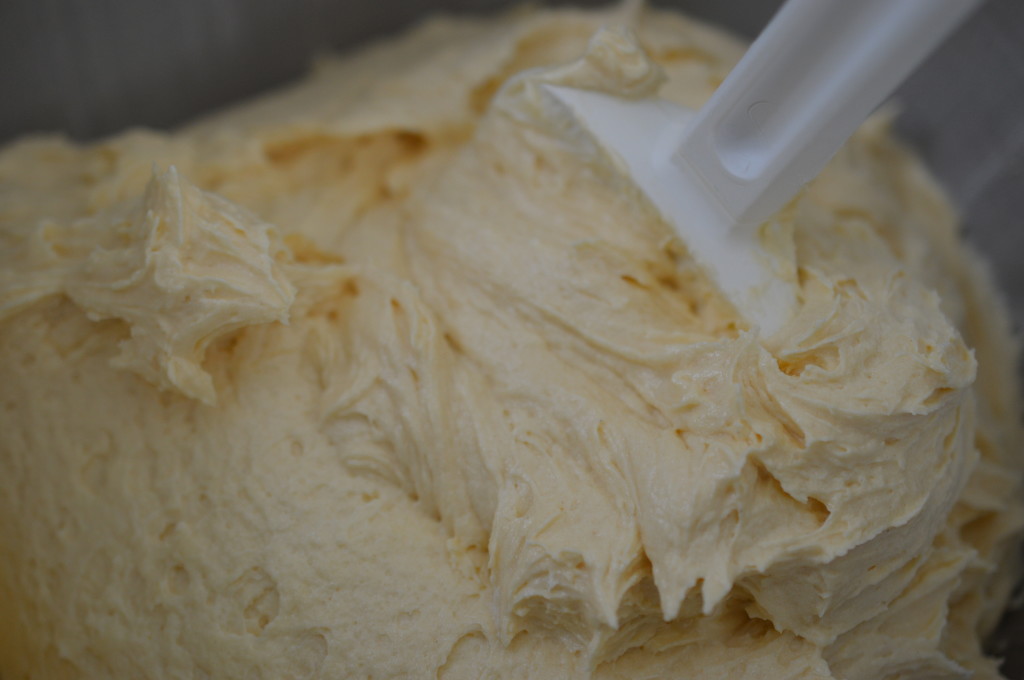
And then the flour. At this point you don’t want to over-mix. I continue with my paddle attachment and beat just enough for everything to be incorporated. Traditionally, it’s a metal spoon and a light folding.
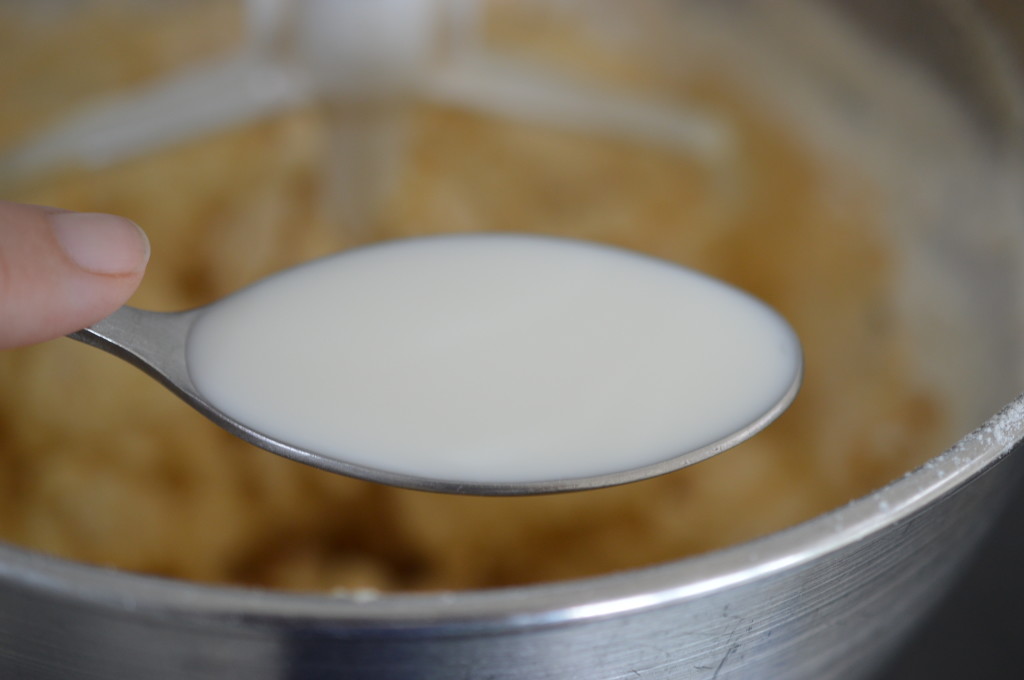
Loosen with a couple of tablespoons of milk. You are looking for ‘dropping consistency’. That’s when the mixture will fall off your spoon with a sharp tap on the side of the bowl.
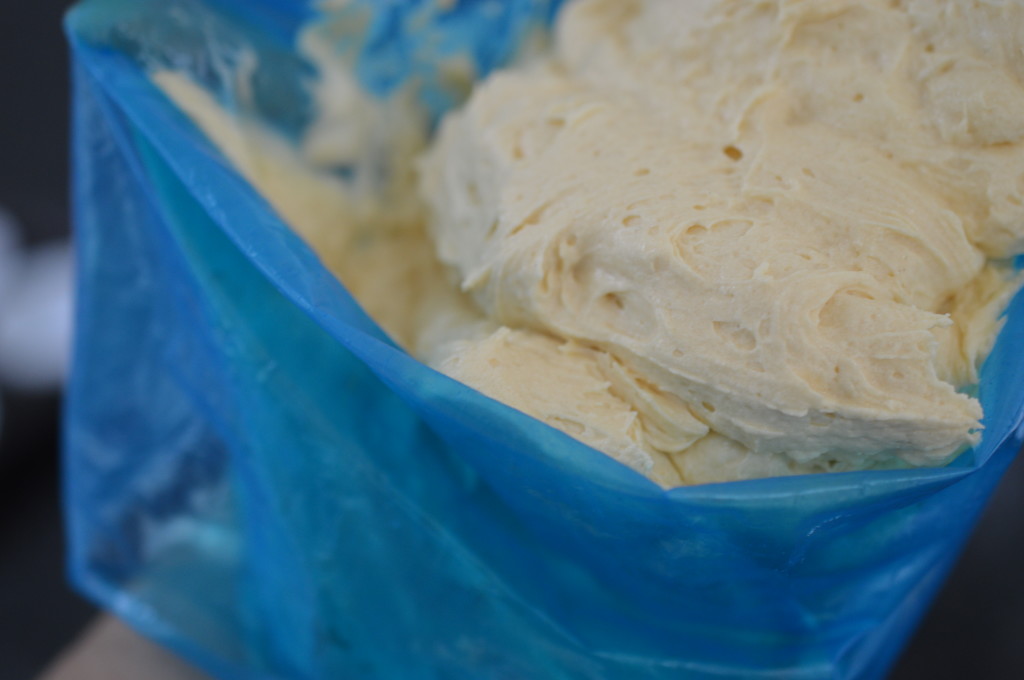
Older recipes will ask you to place two heaped teaspoons into each paper case, but I prefer to pipe mine in.
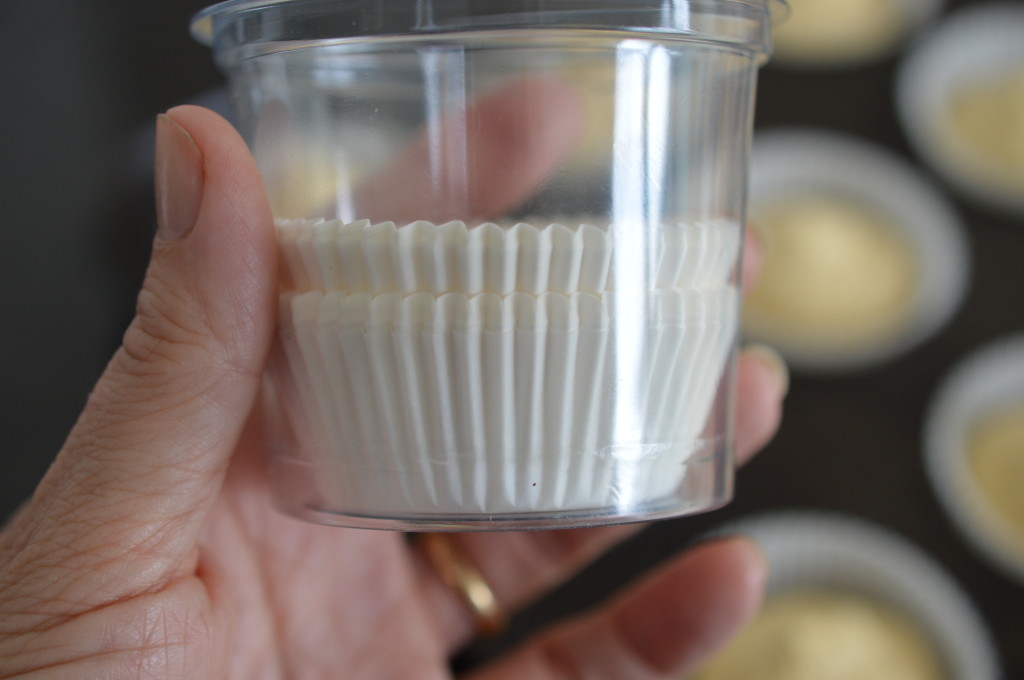
The cases you need are labelled ‘Fairy Cases’ in the UK and they fit neatly into a shallow bun tin (patty tin). It’s worth buying good quality cases because the paper used is thicker and will hold their shape better. Also try and get them in a protective tube as a mis-shapened case means it’s already flattening out and ultimately likely to pull away from your finished cake.
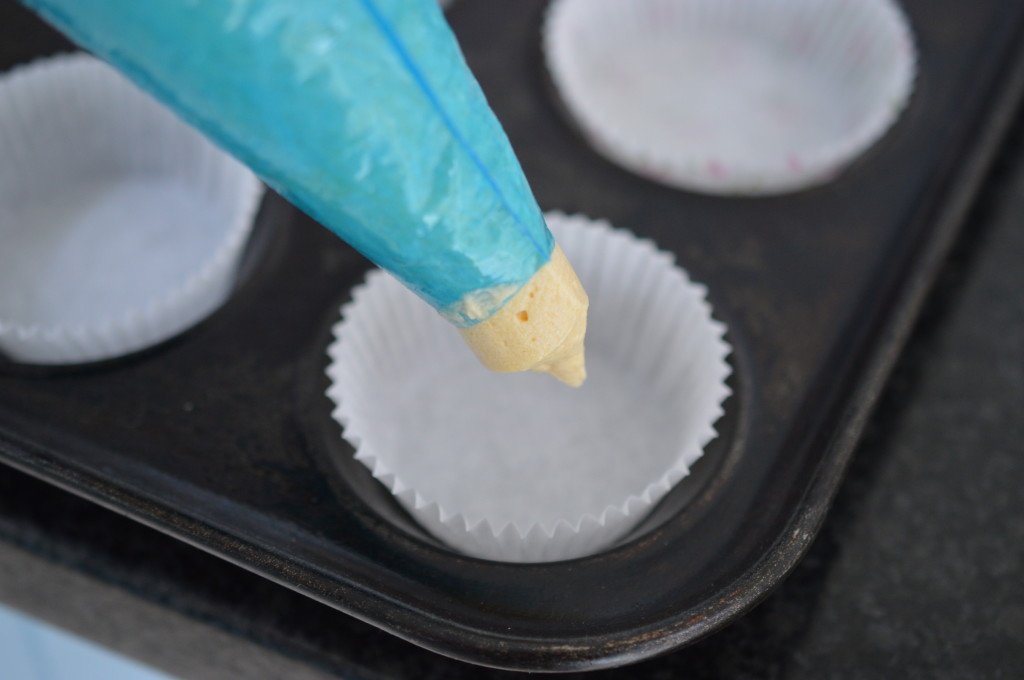
Pipe the mixture in. You’ll get between 18 and 24, depending on the size of the eggs you’ve used and whether or not you want a flat or peaked top to your cakes.
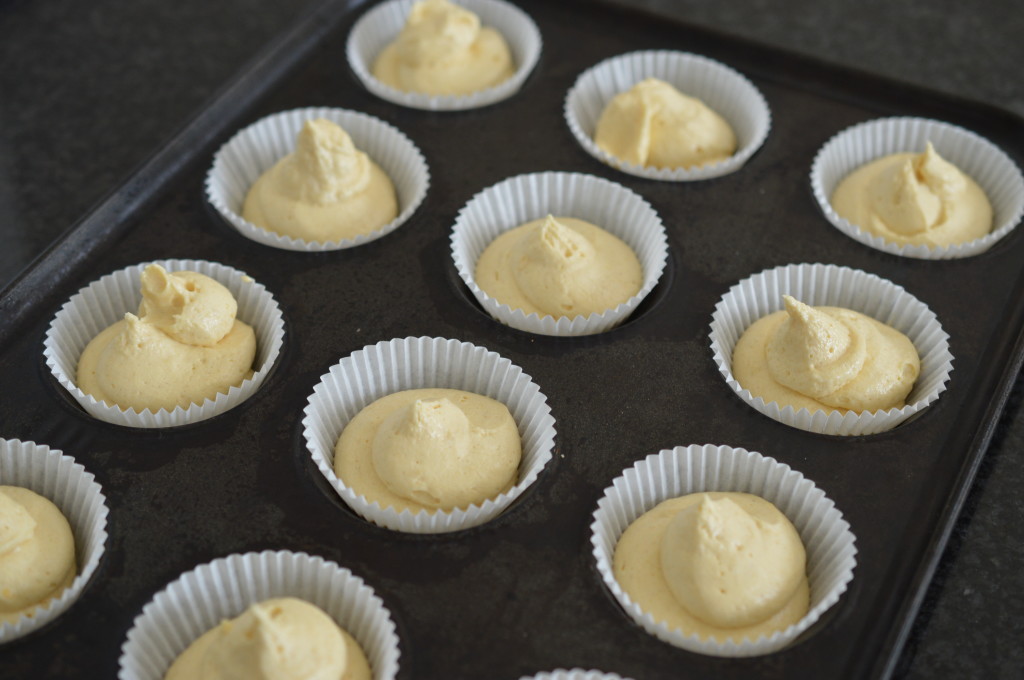
This amount – halfway – and you end up with a flatter top. Two-thirds full gives a slight ‘muffin’ top which is prettier if you are serving your fairy cakes plain.
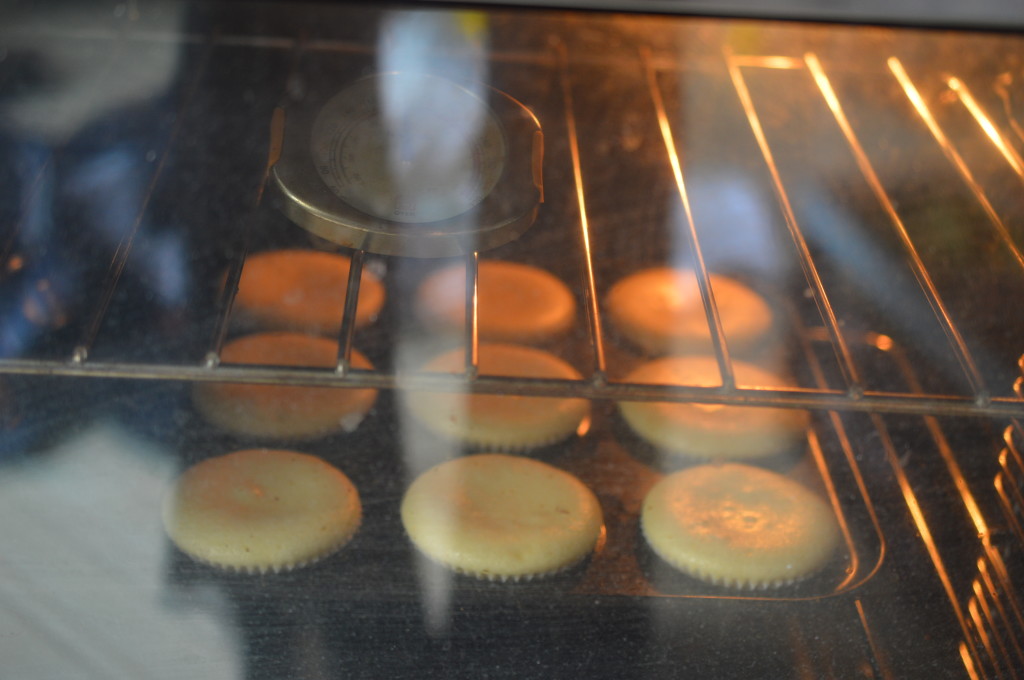
Victoria ‘sandwich’ cakes are notoriously temperamental when it comes to oven temperature. They are the perfect thing to test a new oven with. Fairy cakes are supposed to be more resilient but, oddly, I find the Aga doesn’t do them well. That and 2 lb loaf cakes.
You’d think with all the technological advances it would be possible to manufacture conventional ovens which heat, evenly, to the temperature it says on the dial, but no. They all vary and there is no way round it – you are on your own with yours. Even the best of them will vary depending on how old a model and how much you have cooking in it at any one time. My conventional oven is a disaster. They only way to come close to my desired temperature is to use an oven thermometer and there’s no hope of getting good results if I put two trays in at the same time because the variation top-to-bottom is ridiculous. Plus I also have to turn anything two-thirds through the cooking time as it’s hotter on the left-hand side. This breaks the cardinal rule of ‘do not open the oven door whilst your cake is cooking’. The rush of cold air causes the cake mixture to deflate.
(You can put it’s presence in my life down to the fact I was focussed on convincing my husband it was worth buying a cooker which cost the price of a small car (Aga) whilst still needing a back-up …! It was a tough sell.)
Navigate it all as best you may.
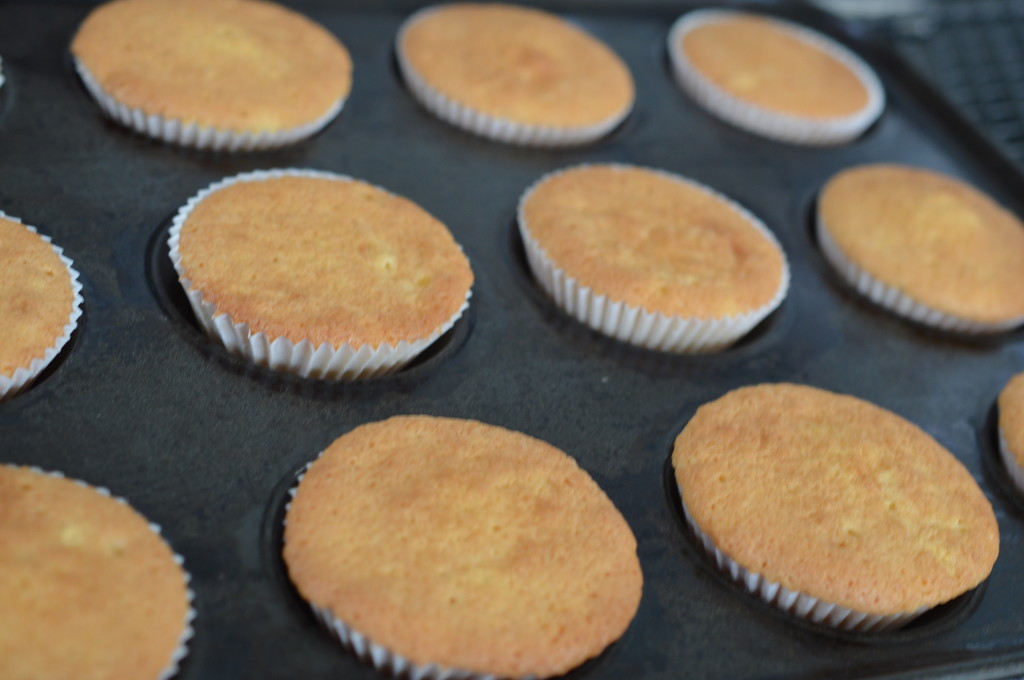
Fifteen minutes later, having done battle with the blasted thing, I have this. If you’re in any doubt they are cooked, a wooden cocktail stick will come out clean.
It’s really important to take them out of the shallow bun tin immediately you remove them from the oven. Transfer them to a cooling rack. If you leave your fairy cakes in the tin the cases will start to peel away as the steam flattens out all those pleats.
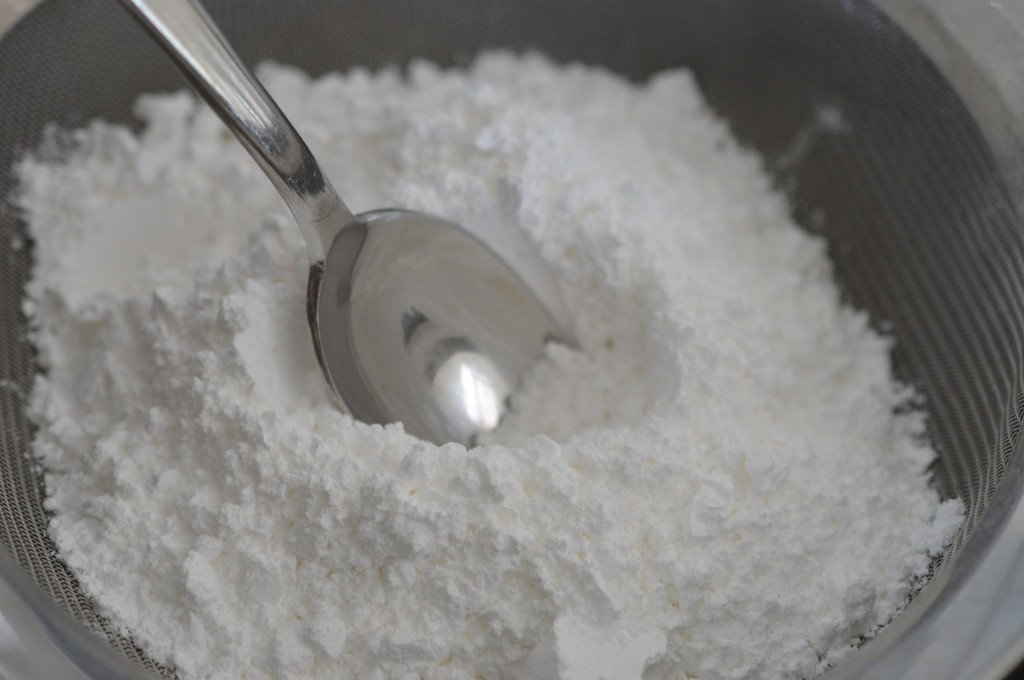
Now the buttercream. This is the traditional ‘English’ buttercream. That’s one part unsalted butter to two parts icing sugar, with milk to loosen. The icing sugar needs sieving to get rid of all the lumps. No airy wafting or you’ll be covered in sugar. Push it through the sieve with the back of a spoon.
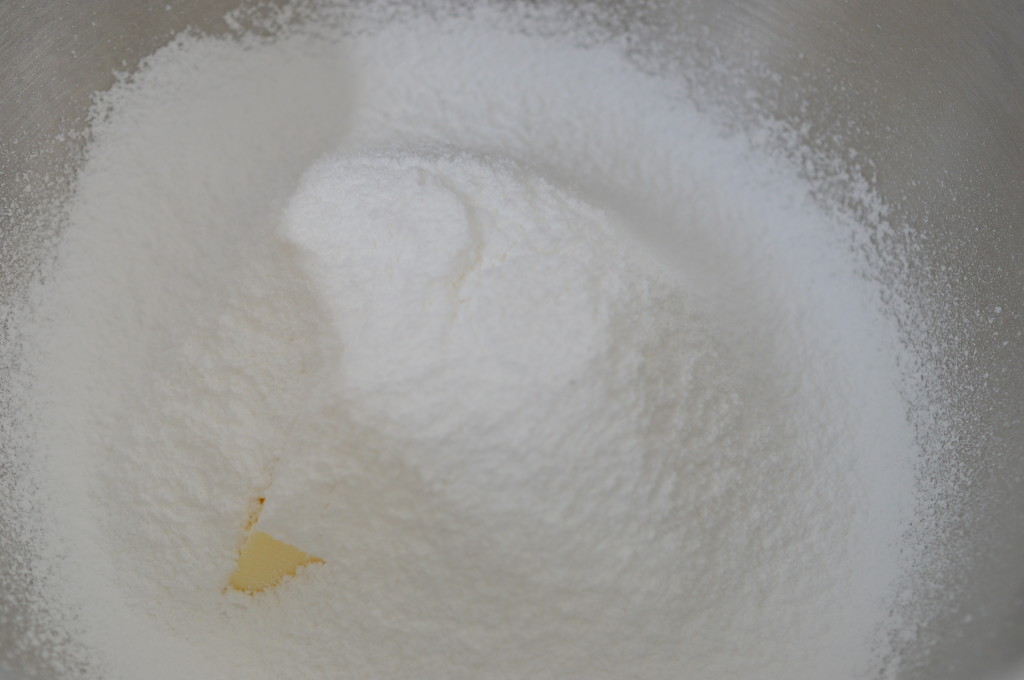
If you are making your buttercream by hand – beat the butter until it is soft and add the icing sugar a couple of tablespoons at a time.
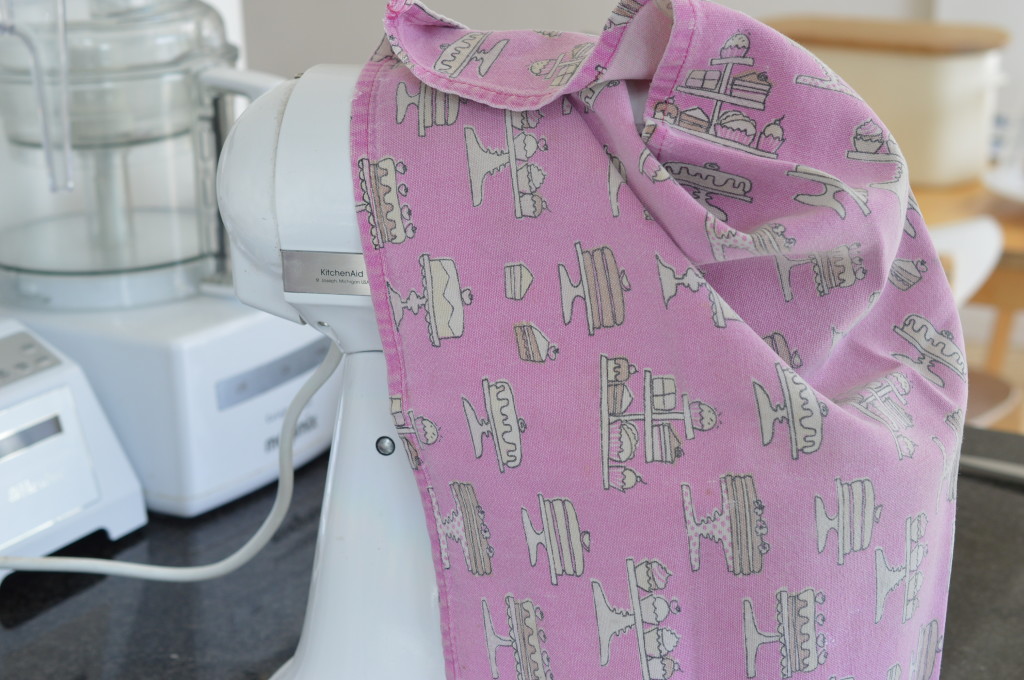
If you are using a stand mixer … this is my top buttercream tip – wrap your mixer in a clean tea towel and you can keep everything in the bowl. Resist the temptation to peak or you will be engulfed in a white cloud.
You want super-smooth buttercream. Beat far longer than you believe necessary. Once everything is together, you can add any colour or flavouring. For my Vanilla Butterfly cakes I’ve added .. vanilla. It’s nice to have the flecks of vanilla so I’ve used a teaspoon of vanilla paste. The seeds from a vanilla pod is the more expensive option.
The consistency is something like whipped double cream. Transfer it to a piping bag (Wilton IB tip) if you want to play.
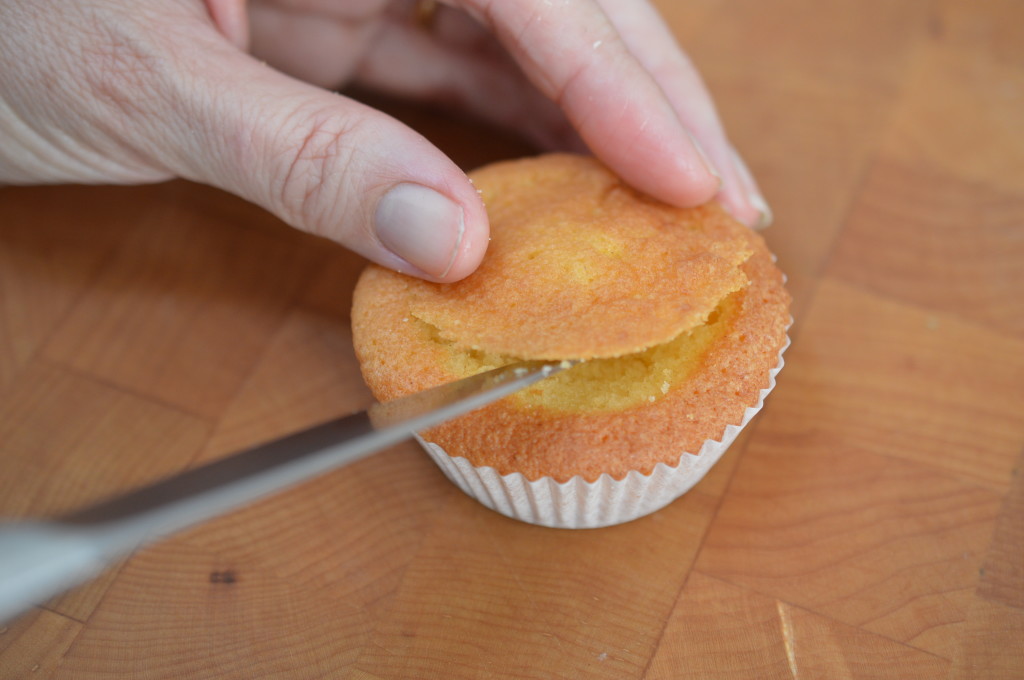
Returning to the cooled fairy cakes, you need to cut a circle out of the top.
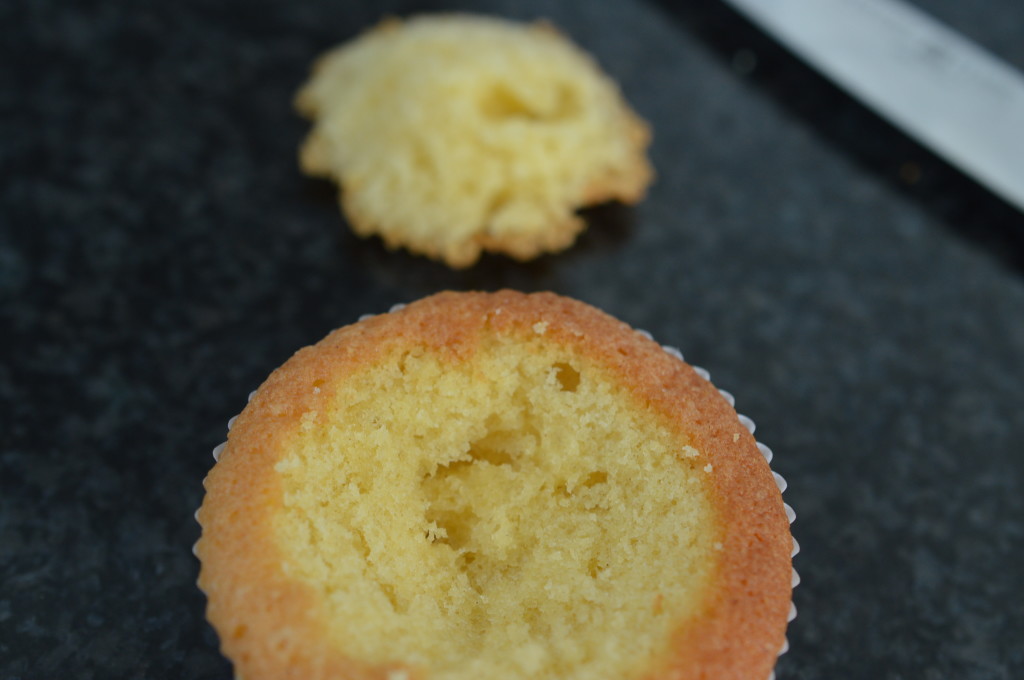
Which leaves room for the buttercream. Pipe in a swirl. Or simply spoon in a blob.
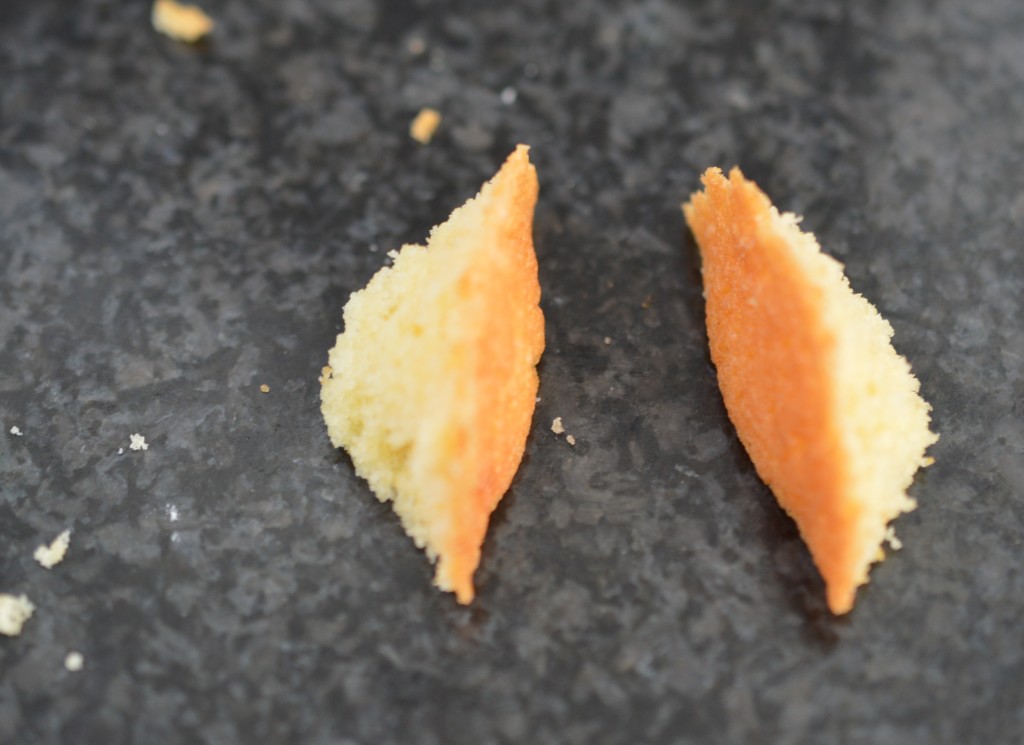
Cut the circle lid in two.
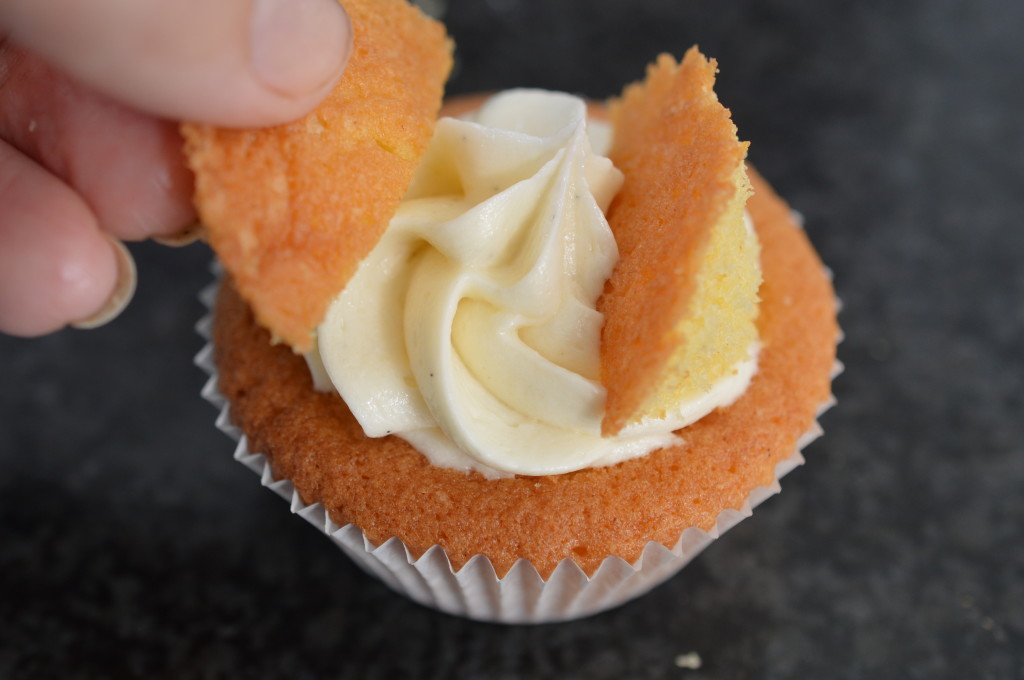
And place like butterfly wings on top of the buttercream. They are best eaten ‘fresh’, but will store for a couple of days. Use a non-airtight tin or the moisture in the cakes will have the paper cases peeling away.
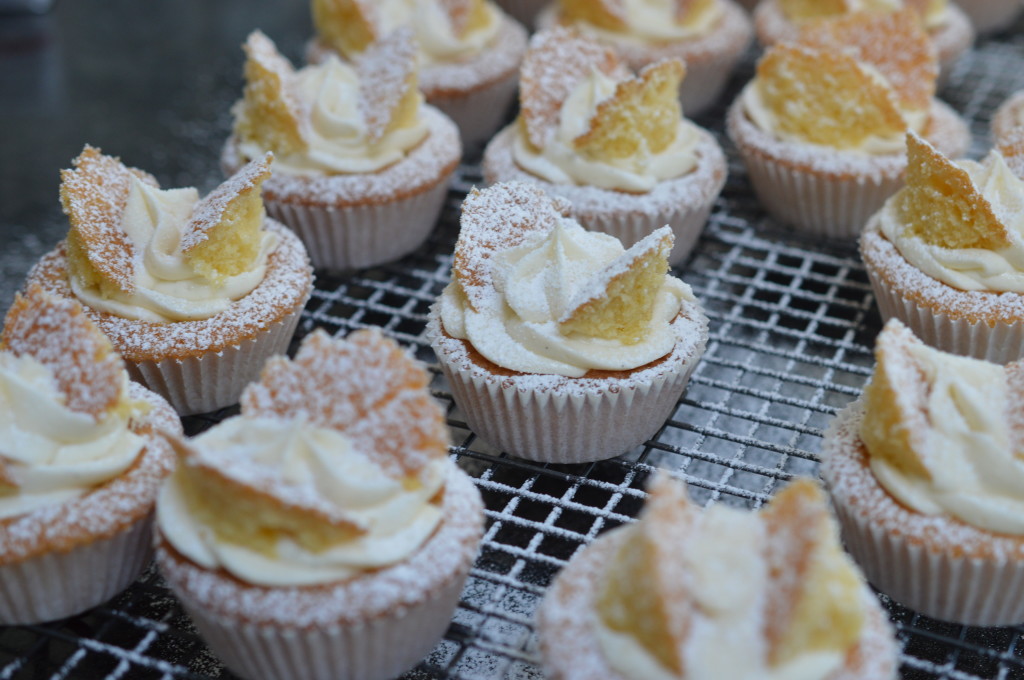
Just before serving, dust with icing sugar.
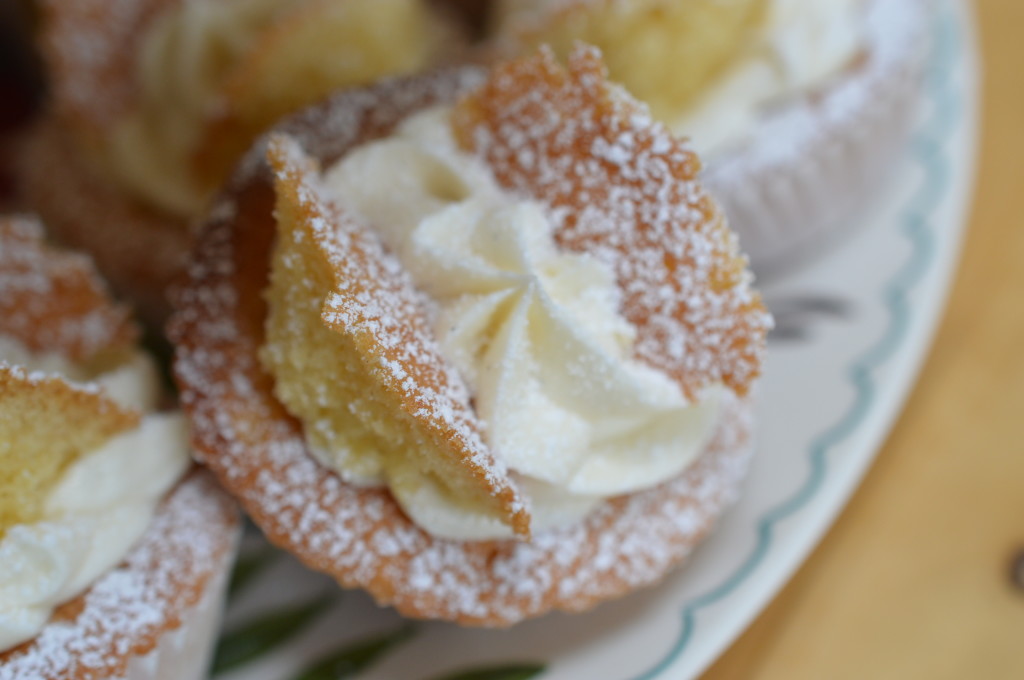
Eat.
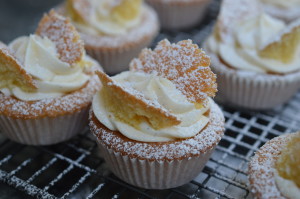 Vanilla Butterfly Cakes
Vanilla Butterfly Cakes
Makes 18-24
For the Fairy Cakes:
- 3 eggs at room temperature, weighed in their shells
- unsalted butter, softened – preferably the same weight as the eggs. Default 175g/6oz.
- caster sugar – preferably the same weight as the eggs. Default 175g/6oz.
- Self-raising flour – preferably the same weight as the eggs. Default 175g/6oz.
- 2 tablespoons milk
- 1 tsp vanilla extract
For the English Buttercream:
- 88g/3oz unsalted butter, softened
- 175g/6oz icing sugar, sieved
- 1-2 tablespoons milk
- 1 tsp vanilla paste (or the seeds of one vanilla pod)
Pre-heat the oven to 200ºC/180ºC Fan/Gas Mark 6/400ºF
Line shallow bun tins with good quality ‘Fairy Cake’ paper cases.
Weigh your eggs, sugar, butter and flour.
‘Cream’ the unsalted butter and caster sugar together until smooth, pale and fluffy. Then sift over a couple of tablespoons of the flour.
Break the eggs into a jug and add one at a time, beating well between each addition.
Sieve over the rest of the flour and incorporate it into the mix. Scrape down the sides of the bowl and loosen the mix with a couple of tablespoons of milk, if necessary, to give a ‘dropping consistency’.
Pipe or spoon the mixture into the paper cases. Bake for around 12-15 minutes until risen and springy to the touch. Immediately transfer to a cooling rack.
Weigh the butter for the buttercream into the mixer bowl and lightly ‘beat’. Then sieve over twice the weight of icing sugar. Beat until super smooth, then add the vanilla paste. Beat again. Finally, beat in a little milk.
Cut off the tops of the fairy cakes, leaving a well for the buttercream. Pipe or spoon into the cavity. Split the ‘lids’ in two and arrange the ‘wings’ on top of the buttercream.
Just before serving, dust with icing sugar.
Eat.
Print.
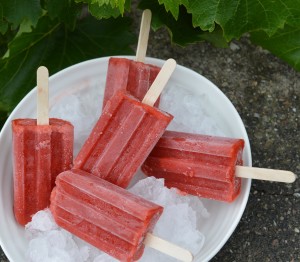 Pimm’s and Strawberry Ice Lollies
Pimm’s and Strawberry Ice Lollies